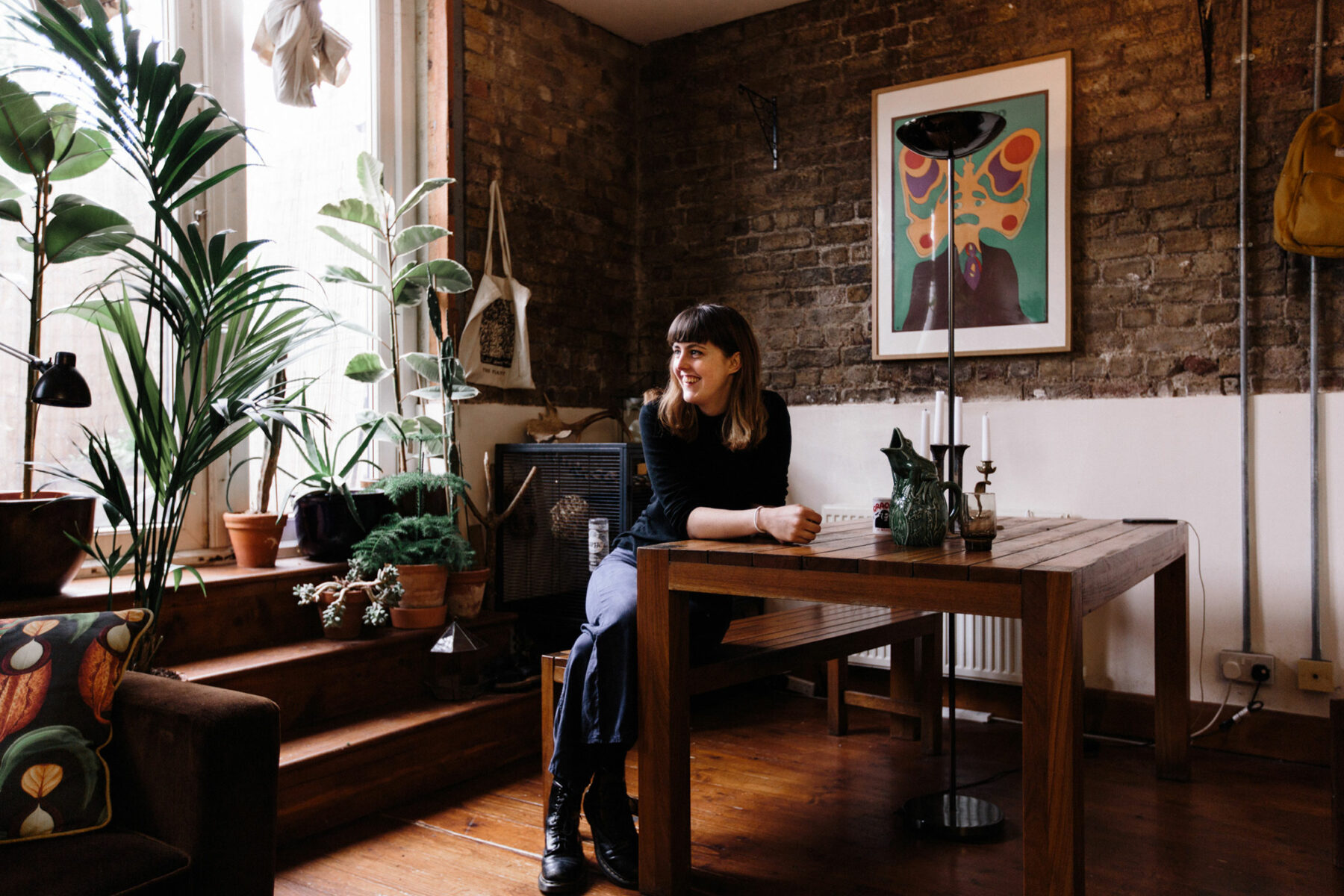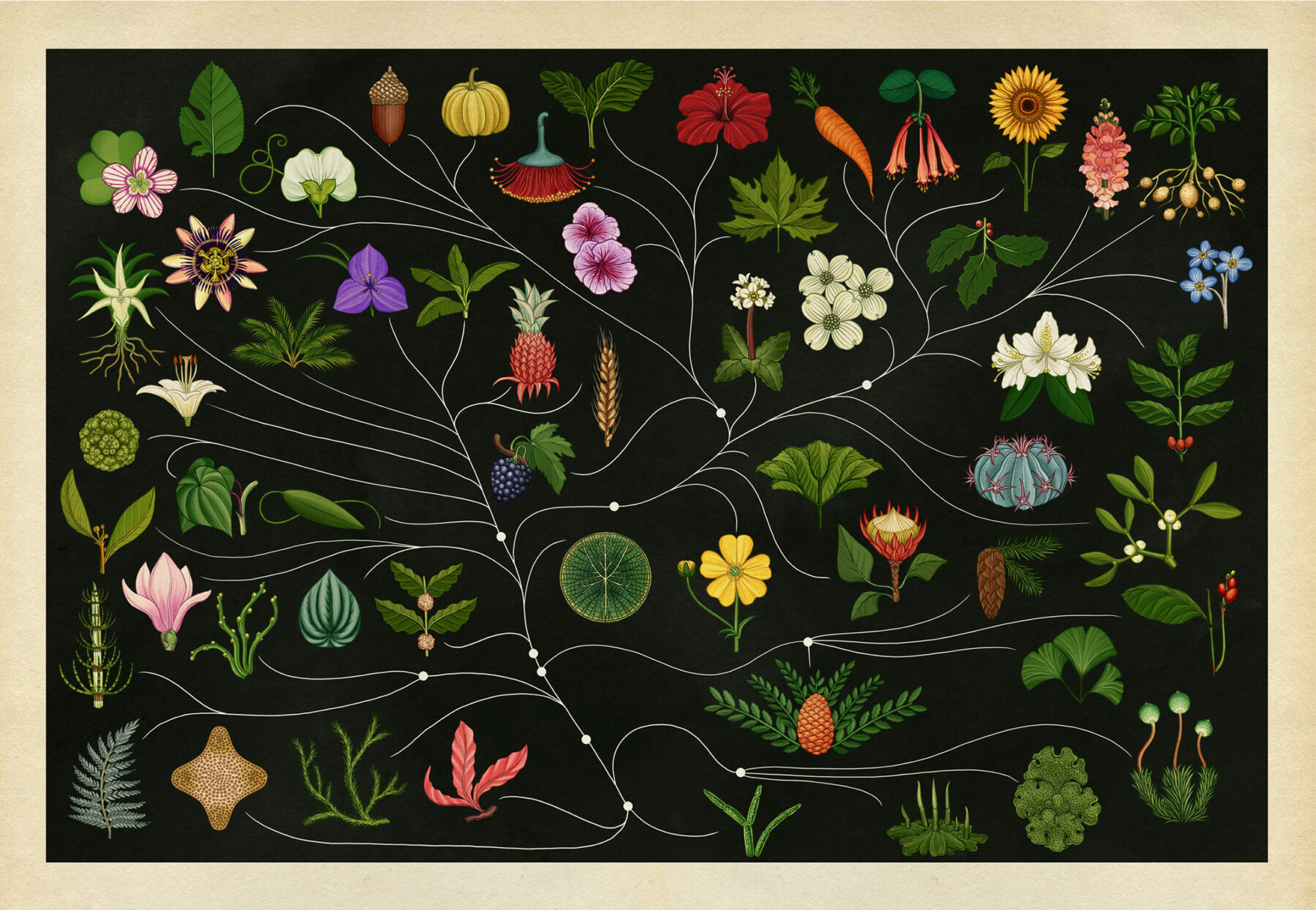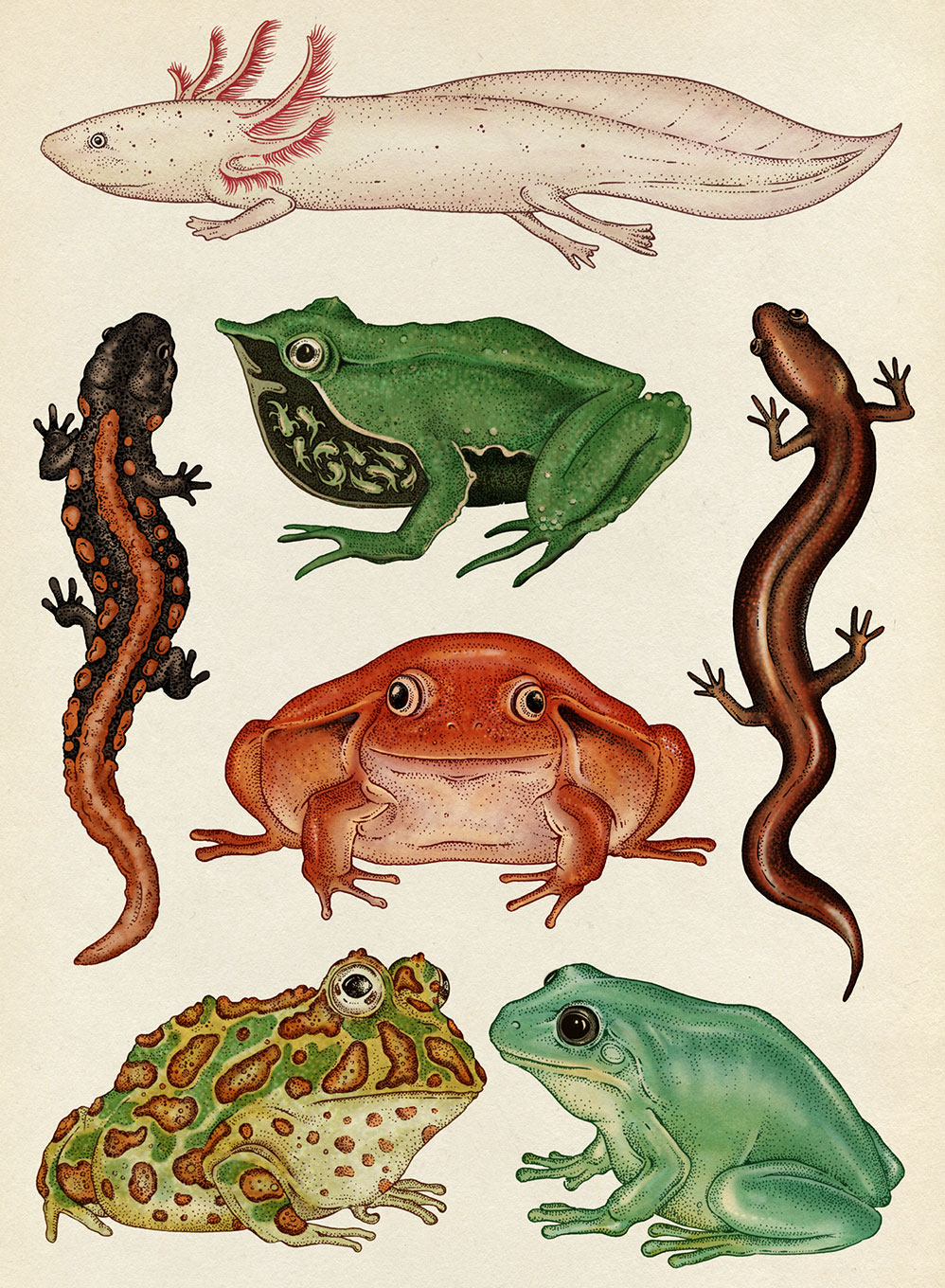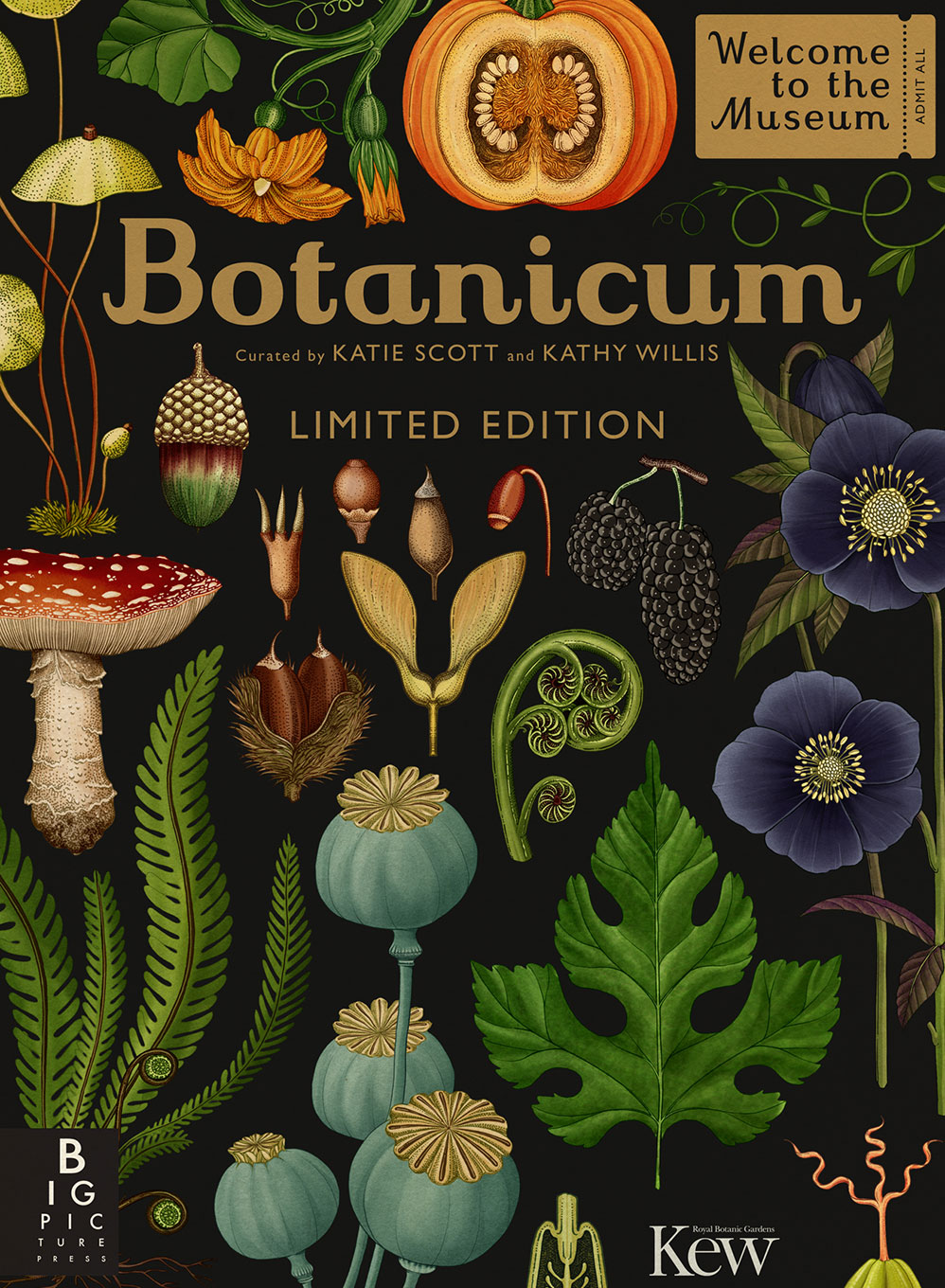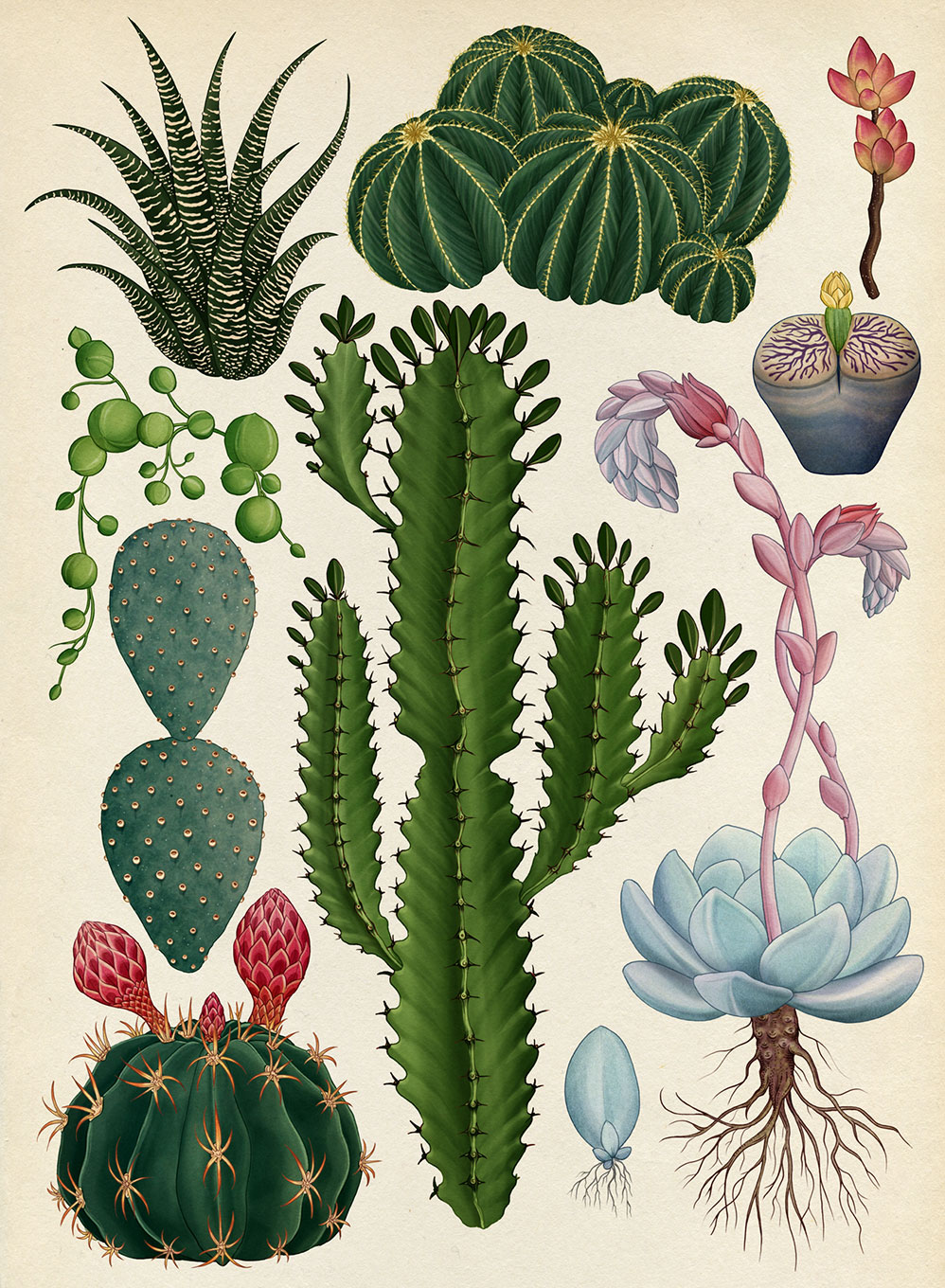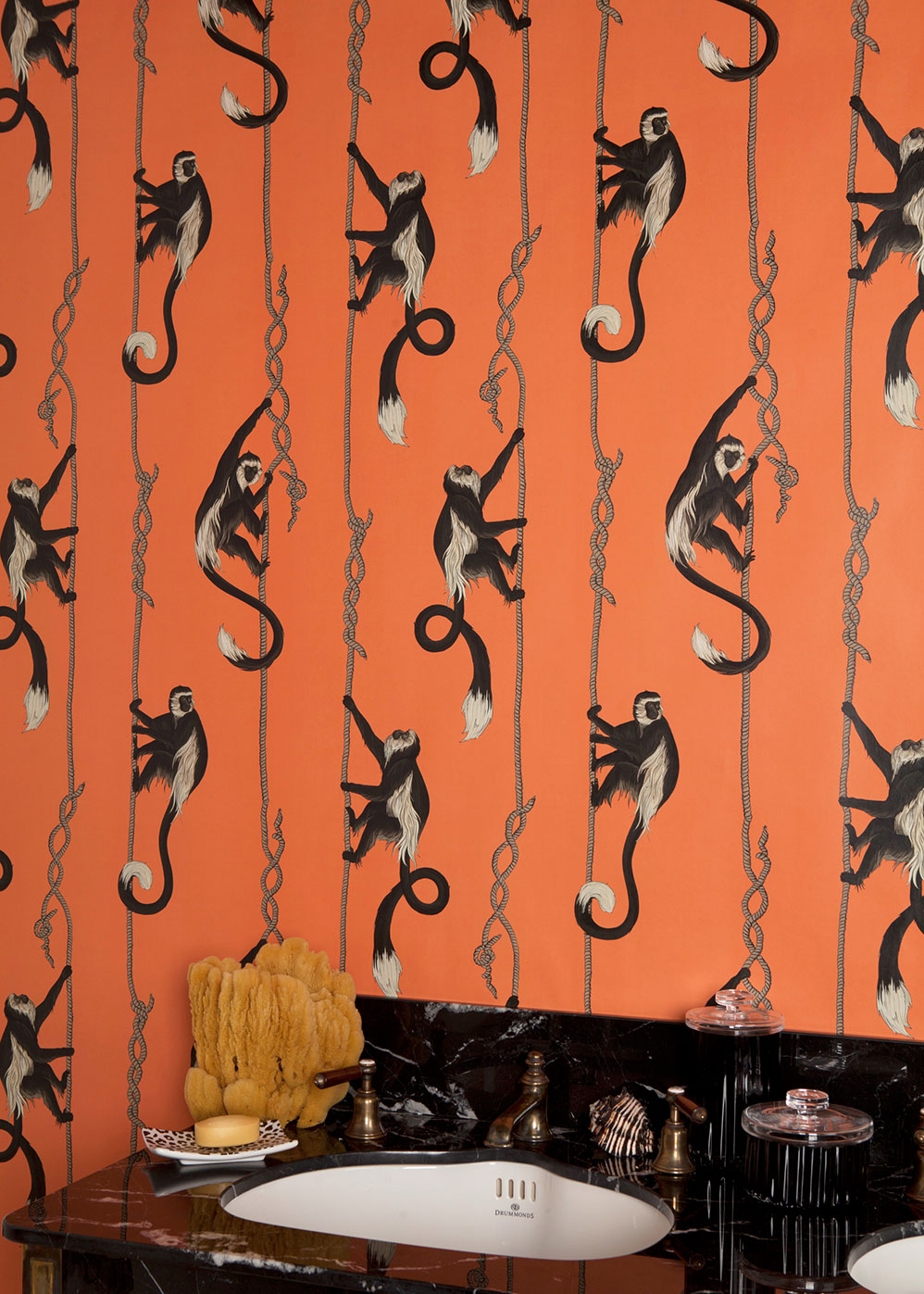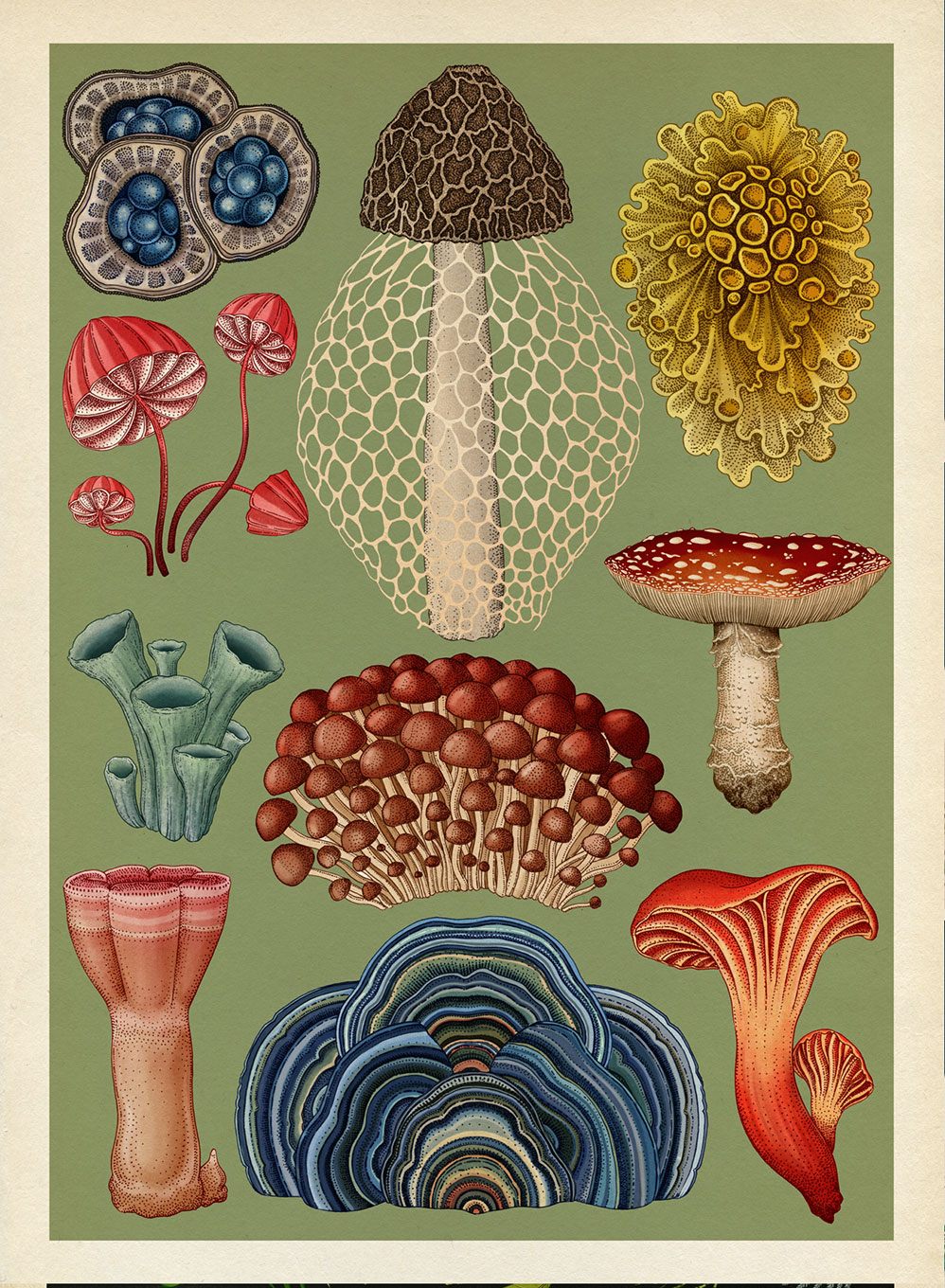Continuing the work of a long tradition of anatomical artists, Katie Scott is something of a craftsman. She’s worked with numerous medical journals and institutions and published three encyclopaedic books, Story of Life: Evolution, Botanicum and Animalium, the latter of which was awarded Children’s Book of the Year by the Sunday Times.
While Katie’s work sits comfortably within the lineage of scientific illustration, nods to fantasy, science fiction, and contemporary design bring a unique cultural understanding to her natural world. It’s this that has attracted the attentions of well known fashion designers, international retailers, interior designers, tattoo artists, musicians and filmmakers alike. Projects with two major fashion houses along with a line for kids are underway, proving just how broad her appeal is.
Take a peek behind the scenes at Katie Scott’s studio in Werde Magazine where you can also follow her step by step DIY tutorial. It’s all part of our collaboration with Werde that is founded on our shared appreciation for working creatively with nature.
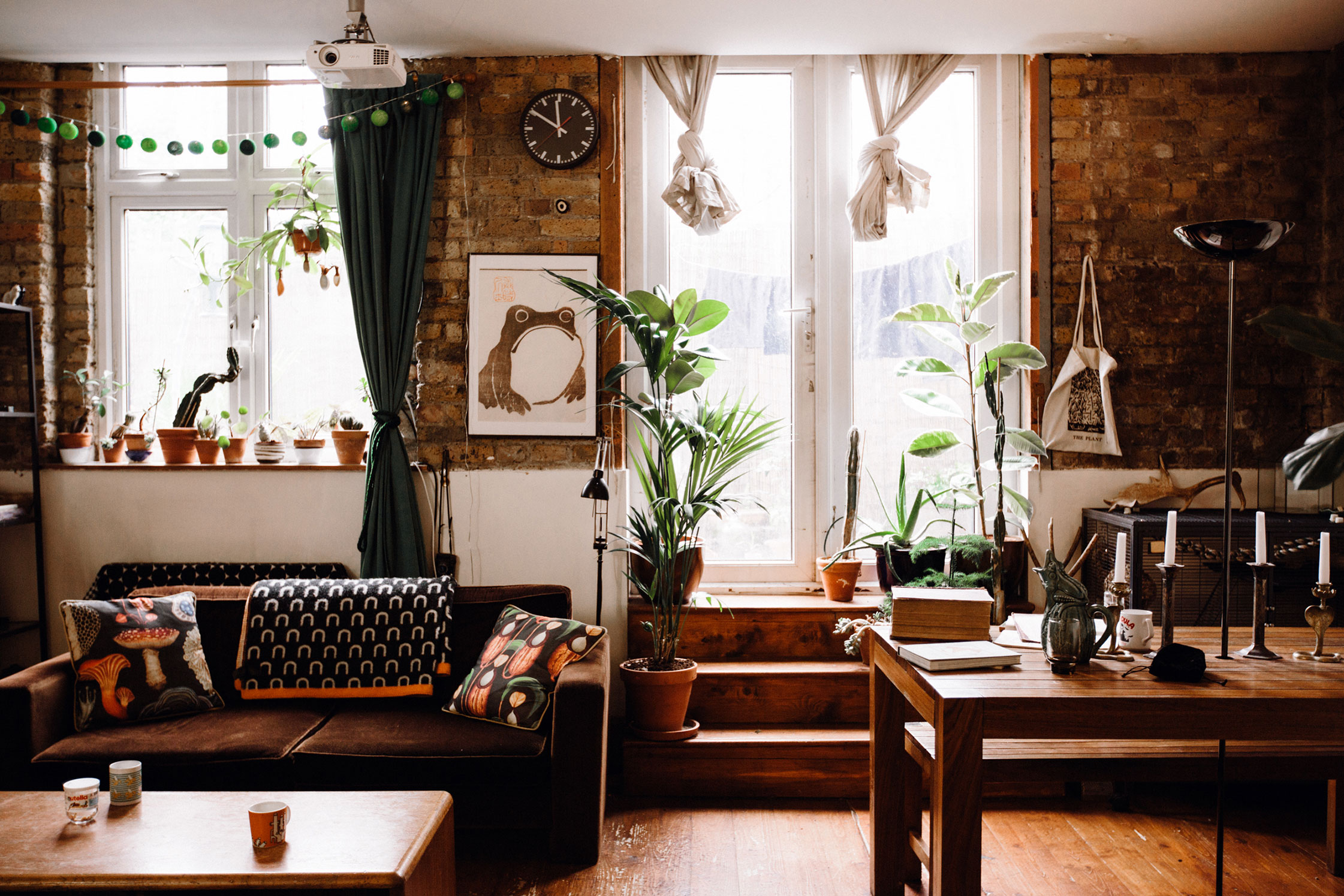
“Plants don’t have to be lovely. I want show the darker side of plants and give them that richness of personality.”
The starting point for these creations is Katie’s studio in north London. She shares the space with a group of friends and her boyfriend, a motion graphics designer and sometime collaborator. In the corner of one room is her desk, surrounded by plants and books. Some are her own, the rest are by those she is influenced by—artists equally interested in the weirdly wonderful. Ernst Haeckel, Fritz Kahn, Albertus Seba, Makoto Azuma—it’s a varied collection but all the artists are linked through their celebration of detail and elaboration of form. “I’m inspired by all sorts of old medical and natural history artwork but I’m not interested in doing simple reproductions of that,” she says. “My visual language draws on different elements from hundreds and thousands of years of scientific artwork but hopefully gives it a modern twist.” On top of her desk are two electronic tablets, one small and slightly battered, one enormous and shiny. “It was meant to be a reward for all my hard work but it’s too big, it’s tiring on the arm!” she says. Two days in, it’s is being returned in favor of ‘the usual’.
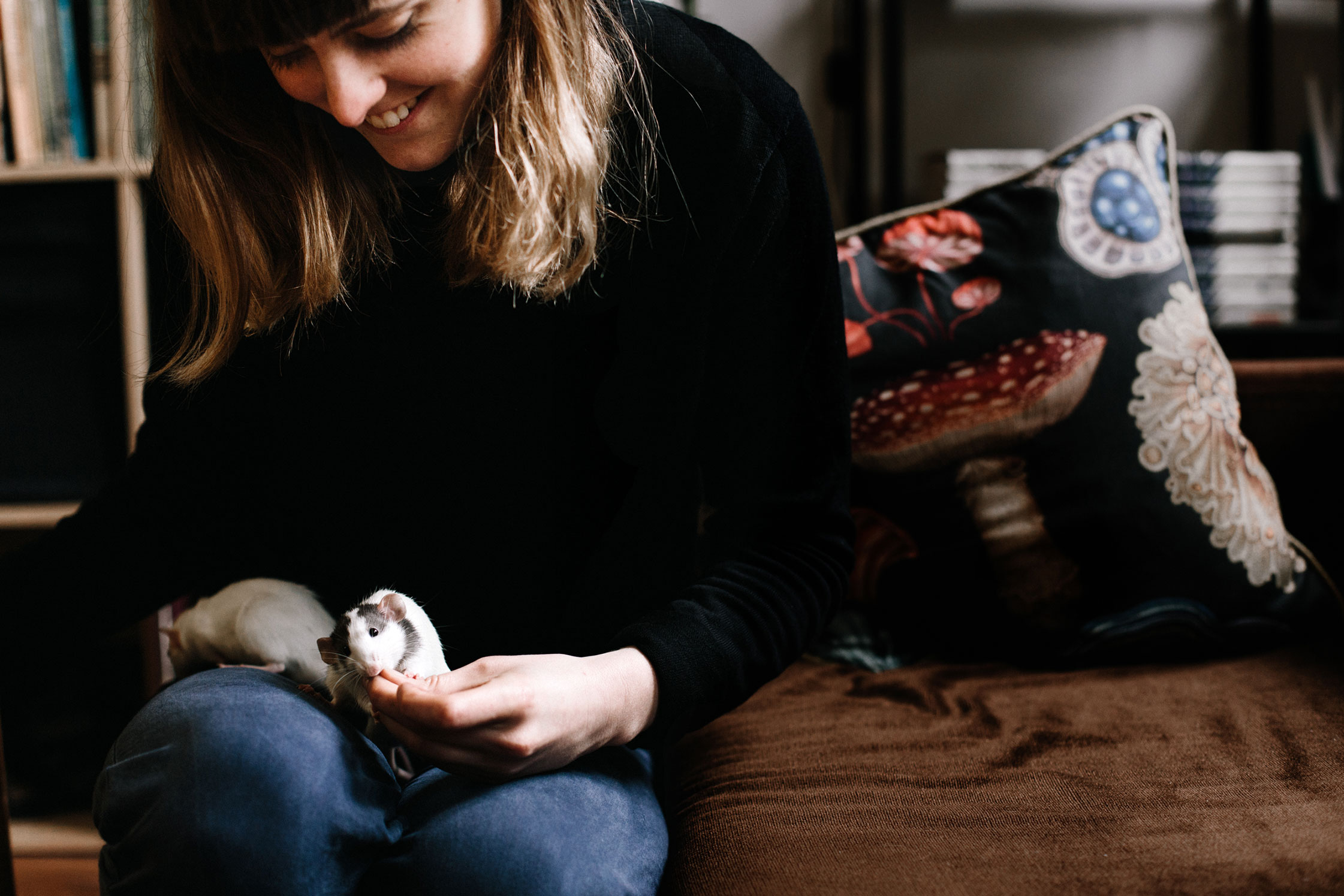
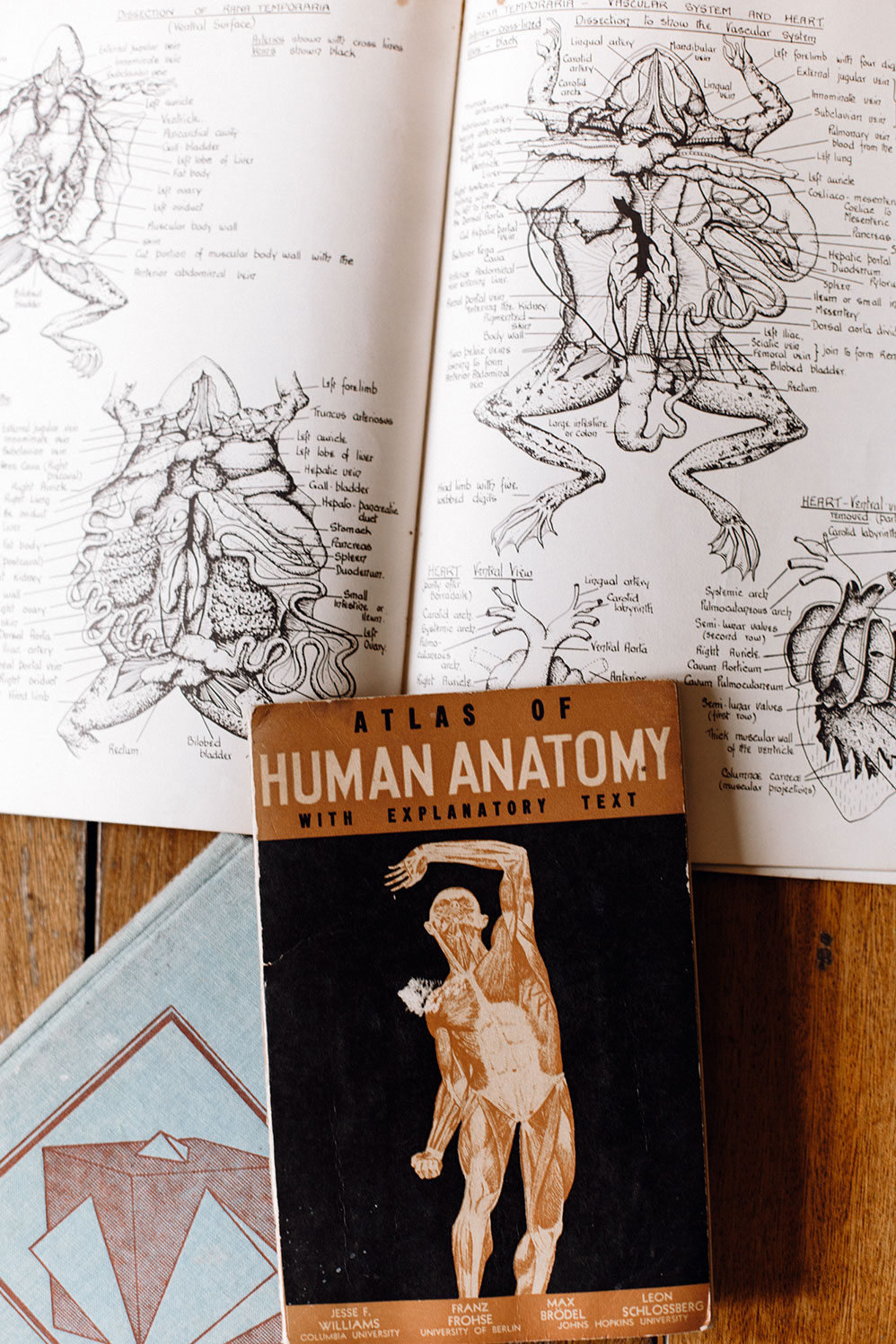
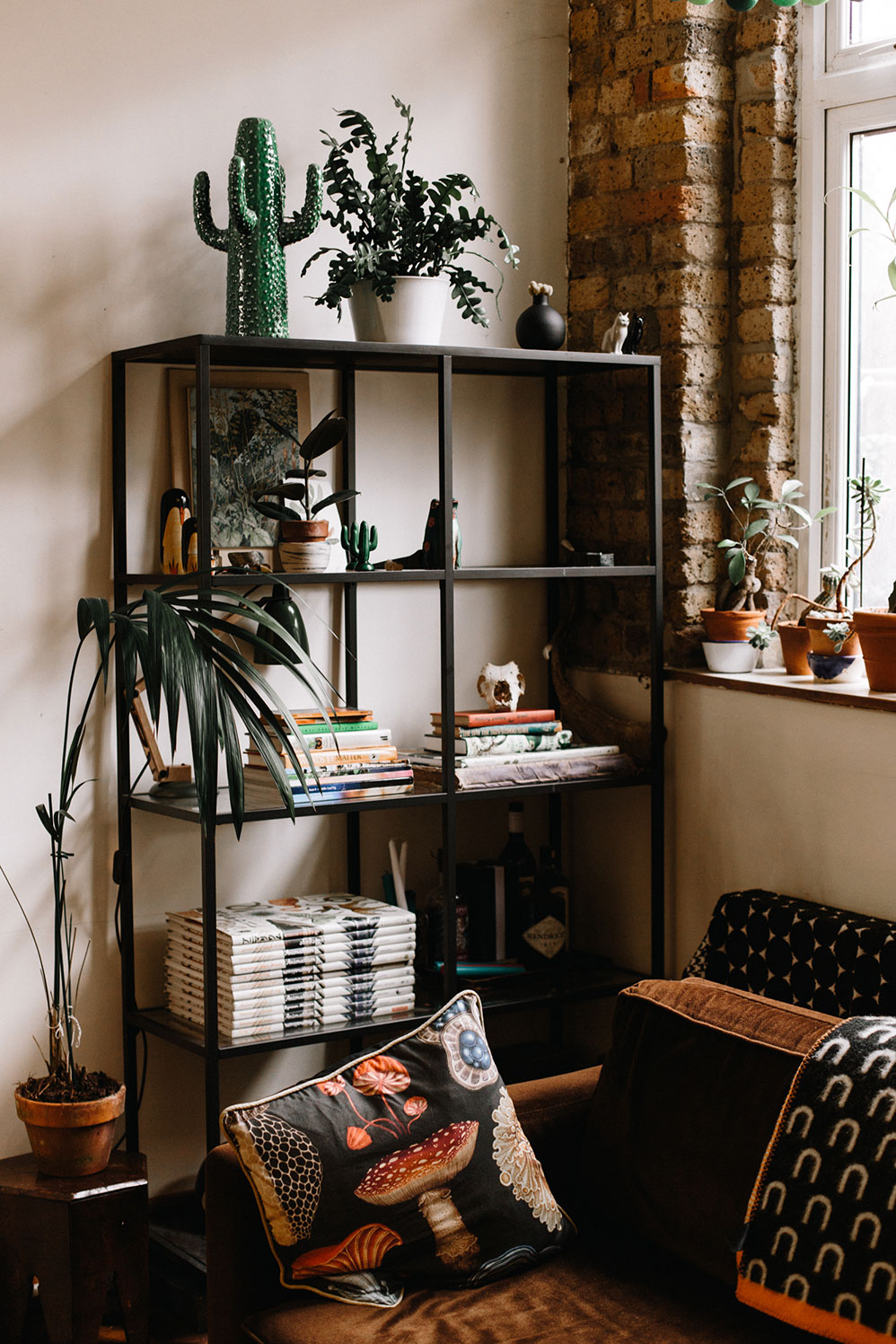
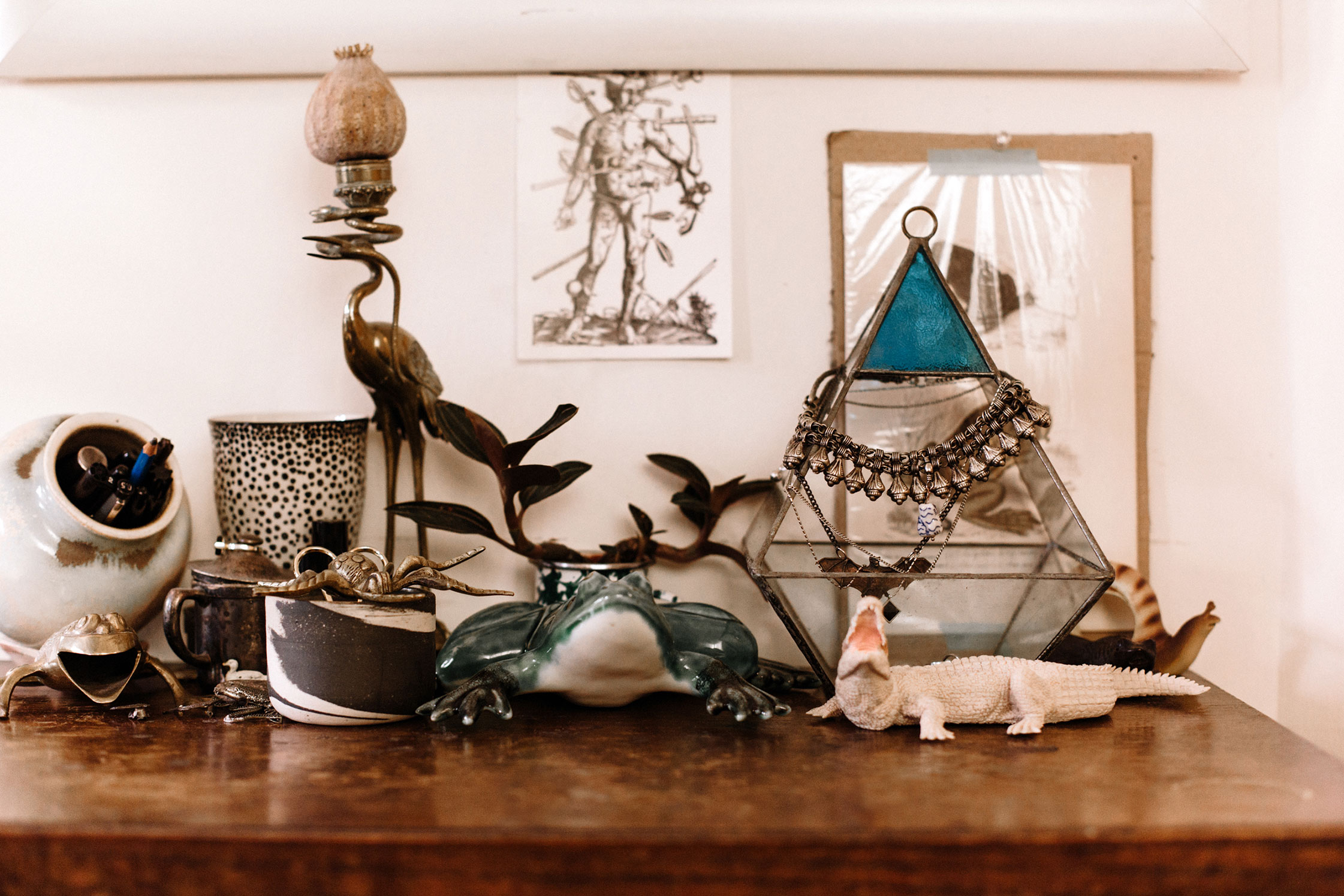
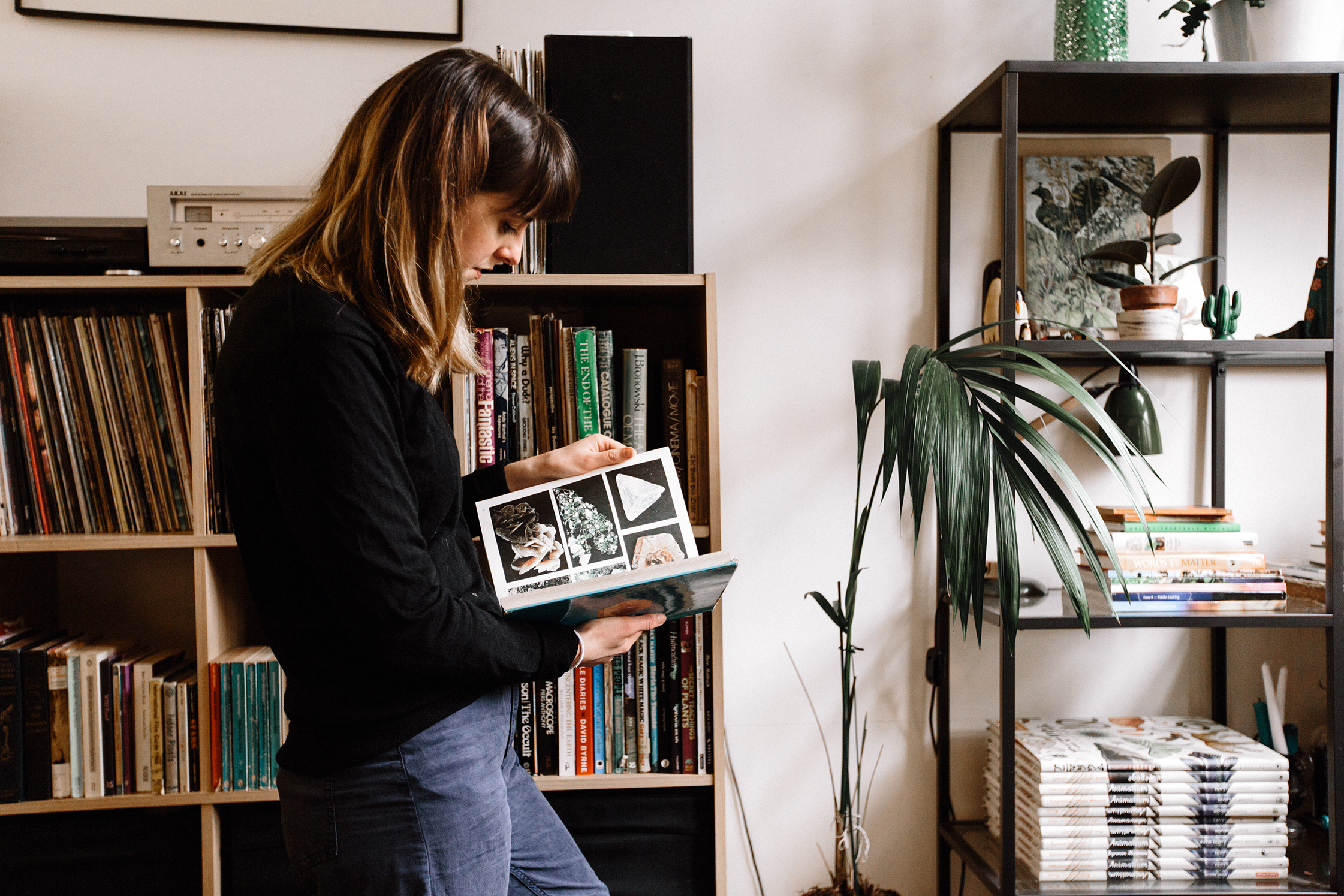
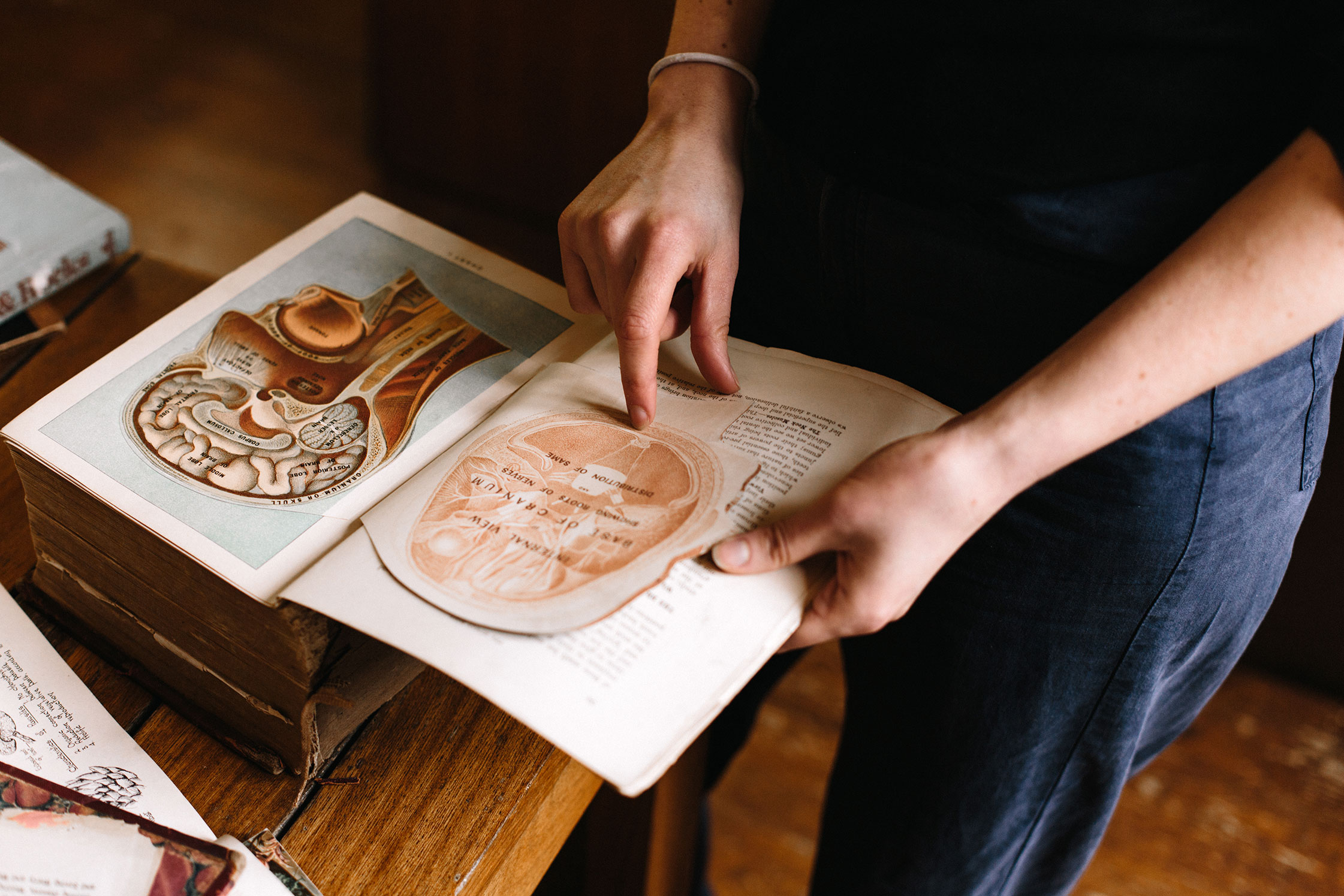
That’s not to say Katie is a technophobe. She’s grown up with digital design. Her father is a graphic designer and her mother was in motion graphics, so technology has always had a welcome place in aiding her creativity. “My mum bought a trailer and put it in the garden and turned it into her own motion graphics studio, so I grew up using ’90s Photoshop and a graphics tablet instead of a mouse.” Her parents’ success also proved that the arts could be a viable career, meaning she sidestepped that dreaded teenage conversation. “Thankfully, I never had to convince my parents to let me go to art school.” Nevertheless, it took a move from leafy Kent to London at age 16 to open her eyes to the possibility of illustration. “I didn’t even know what illustration was until I met some friends who were about to go to university to study it! I really liked art and I really liked graphic design at school but neither felt exactly right. When I was told about illustration, it just made sense.”
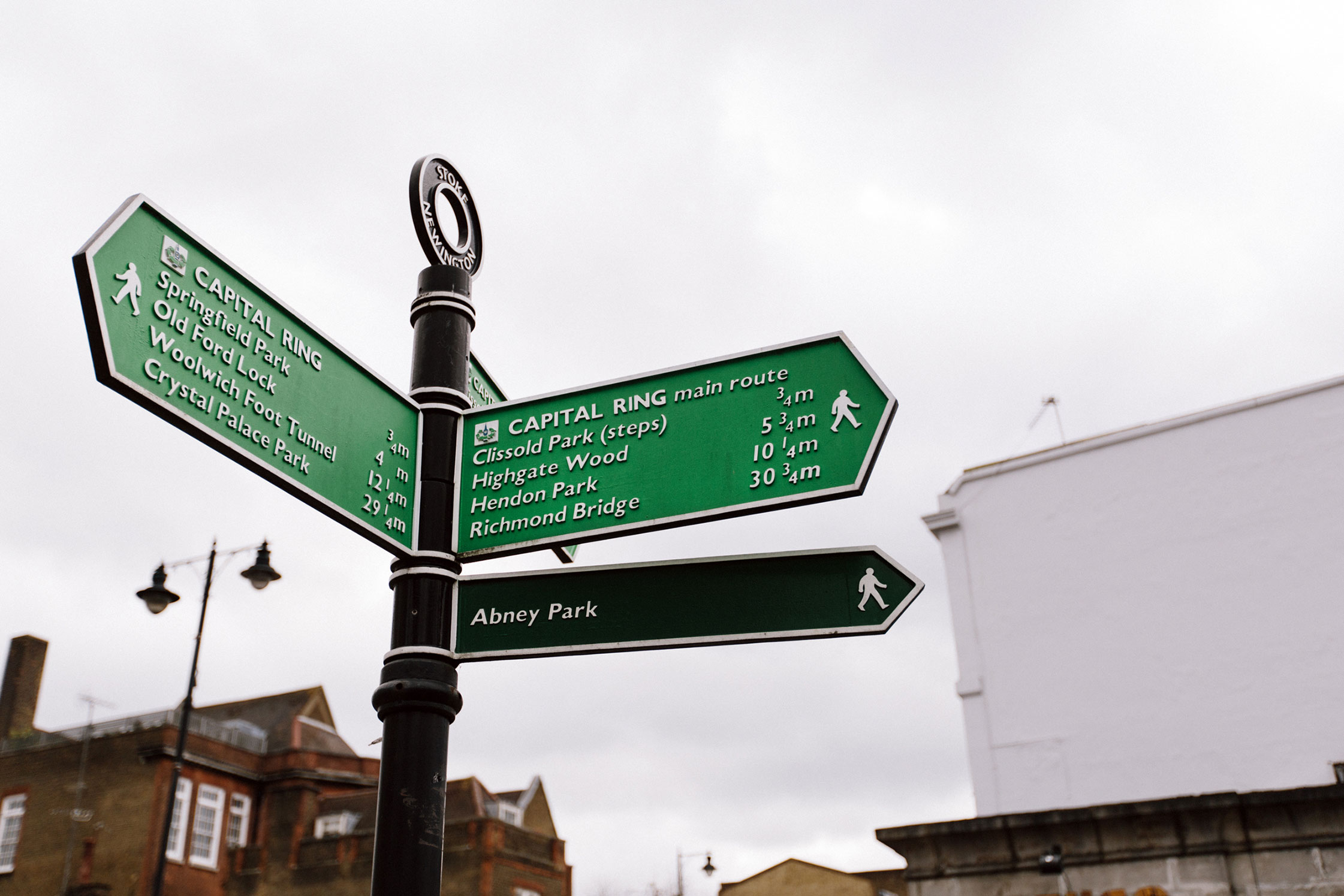
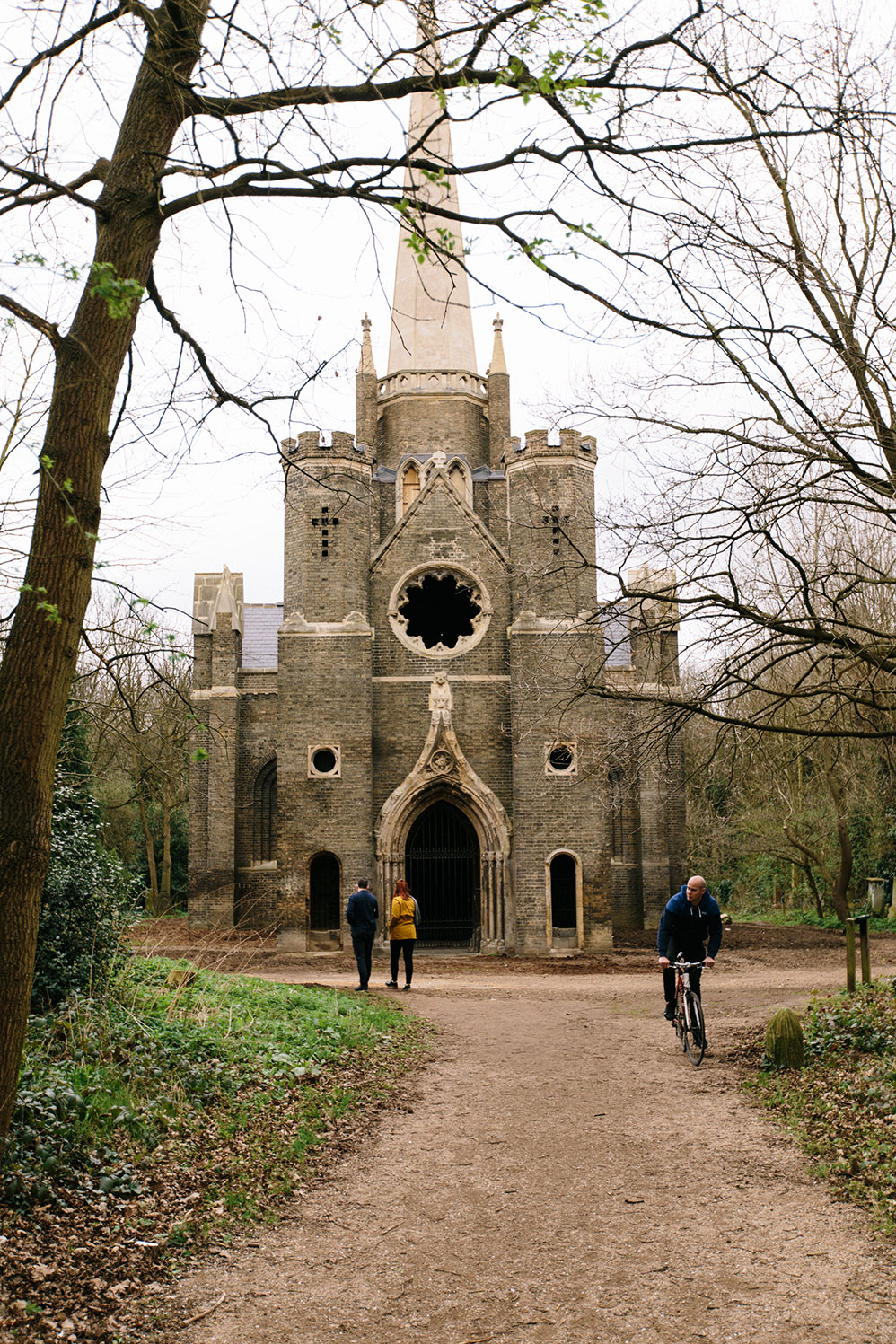
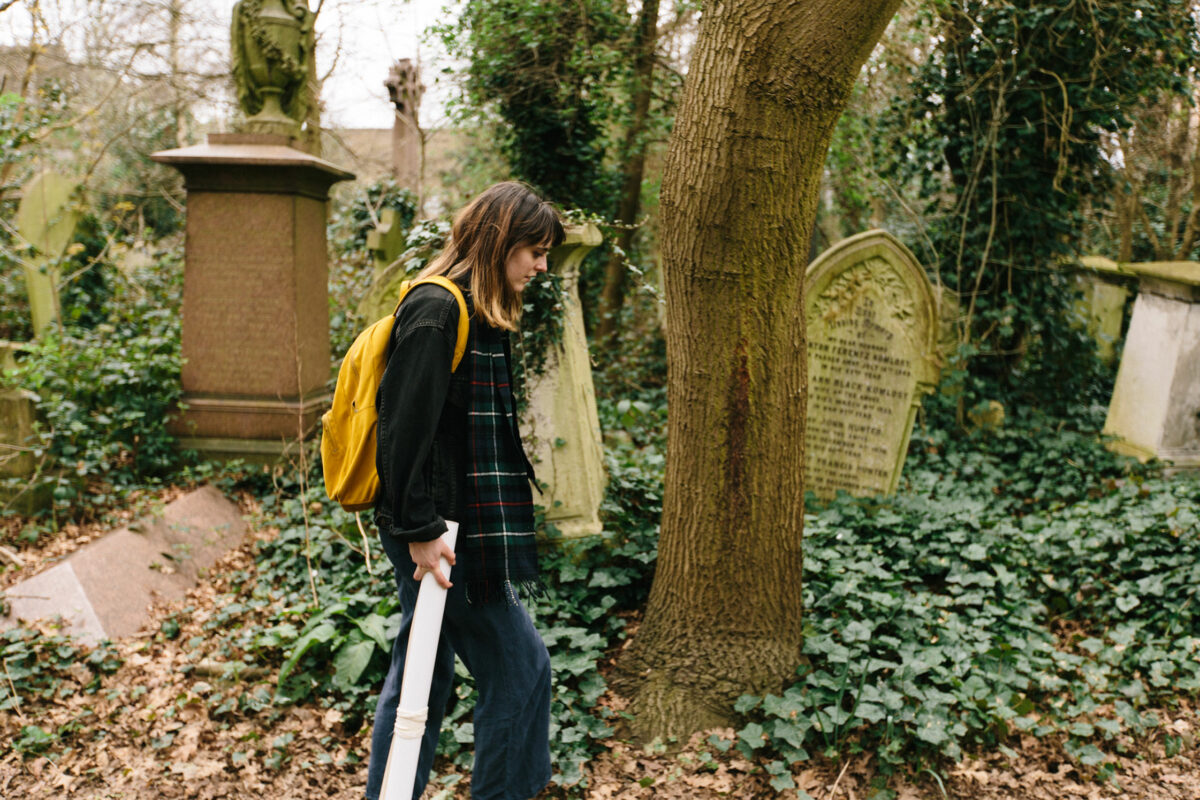
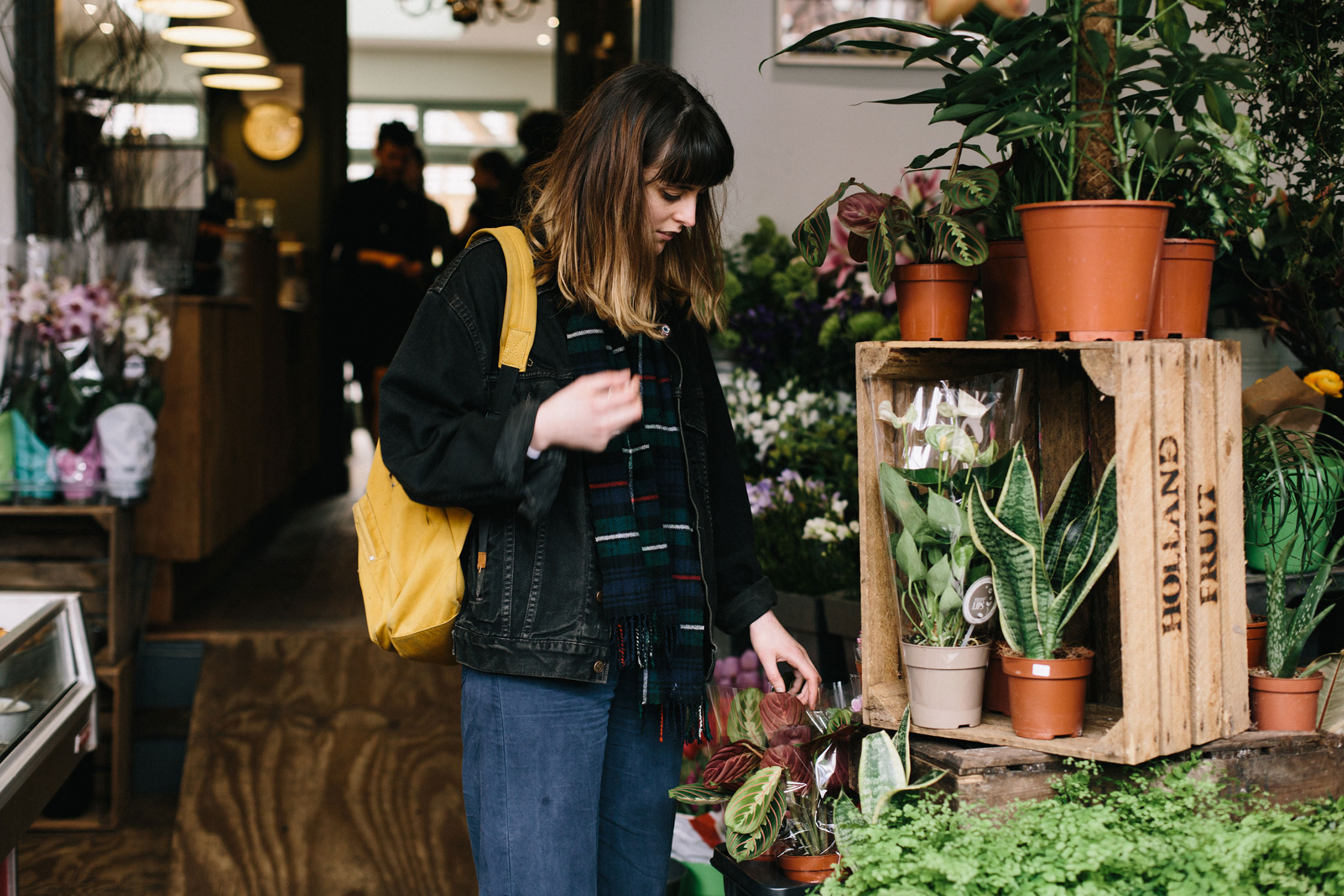
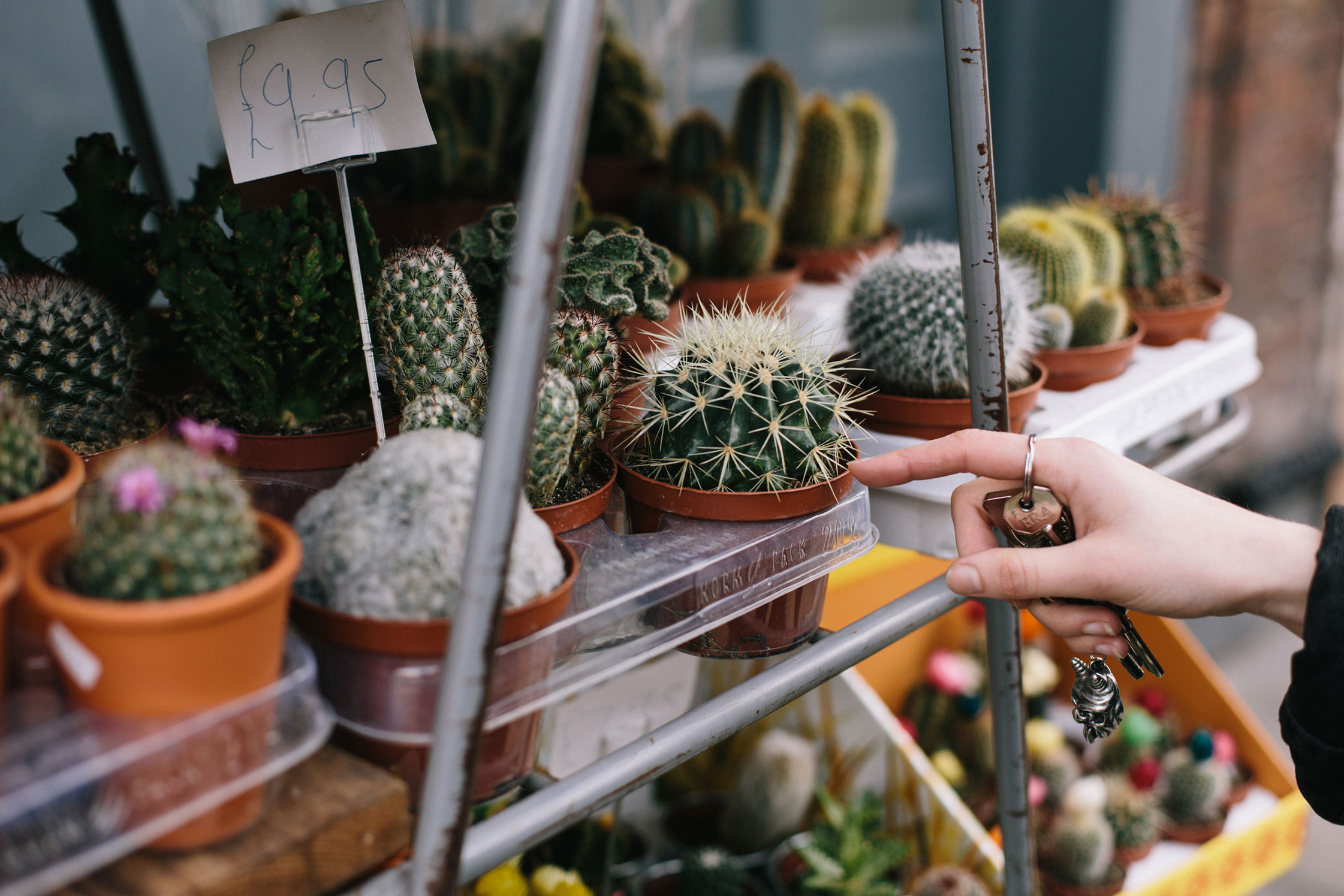
Katie left London to study in Brighton, an English coastal town known for celebrating its local arts scene. In her final year, well-known design site It’s Nice That picked up on her work and featured her as their student of the month. That set the ball rolling and she has not been short of work since. Moving back to London after graduating, she and several friends moved into a house together: “Sharing a place with friends has meant that we can focus on being freelance without needing to get a job. We were incredibly lucky. I don’t think we’d have been able to give our careers the same start in London as it is now.”
Aside from background, talent, and a bit of luck, one thing that has undoubtedly served Katie’s career well is her attitude. She’s easygoing and extremely self-effacing but has an underlying confidence in her own skill. For clients, you’d imagine, that’s a winning combination. But does her own humility make it harder to fight her own corner? “At every point, I try and retain the things I find important. I’m not very argumentative but I’m getting much better at saying no. When I was working with Royal Botanic Gardens, Kew on Botanicum, the standard of accuracy they wanted was obviously very high. But they were totally understanding of my artistic vision. It’s not a book for scientists, it’s a book to inspire people, particularly children, to appreciate the natural world.”
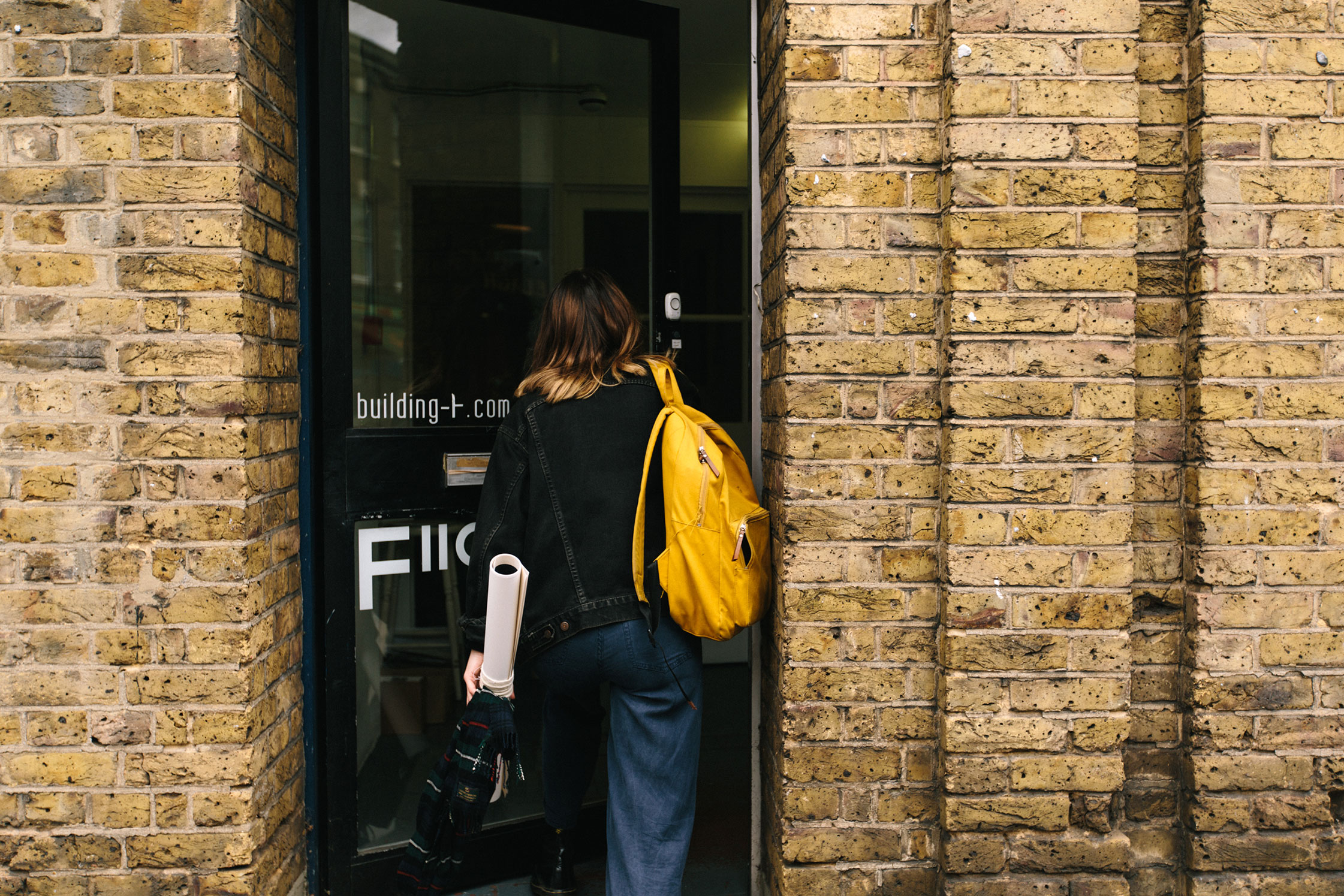
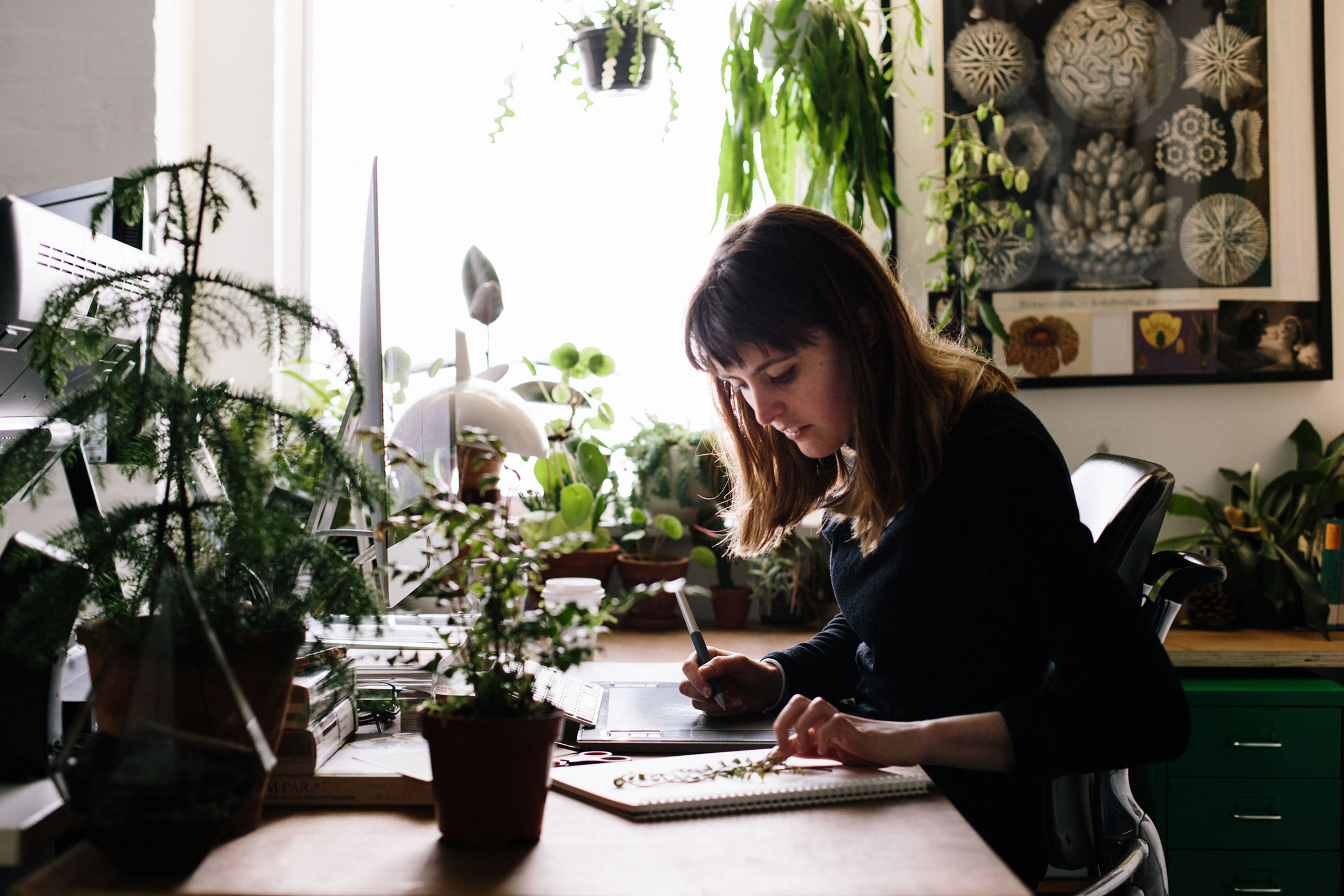
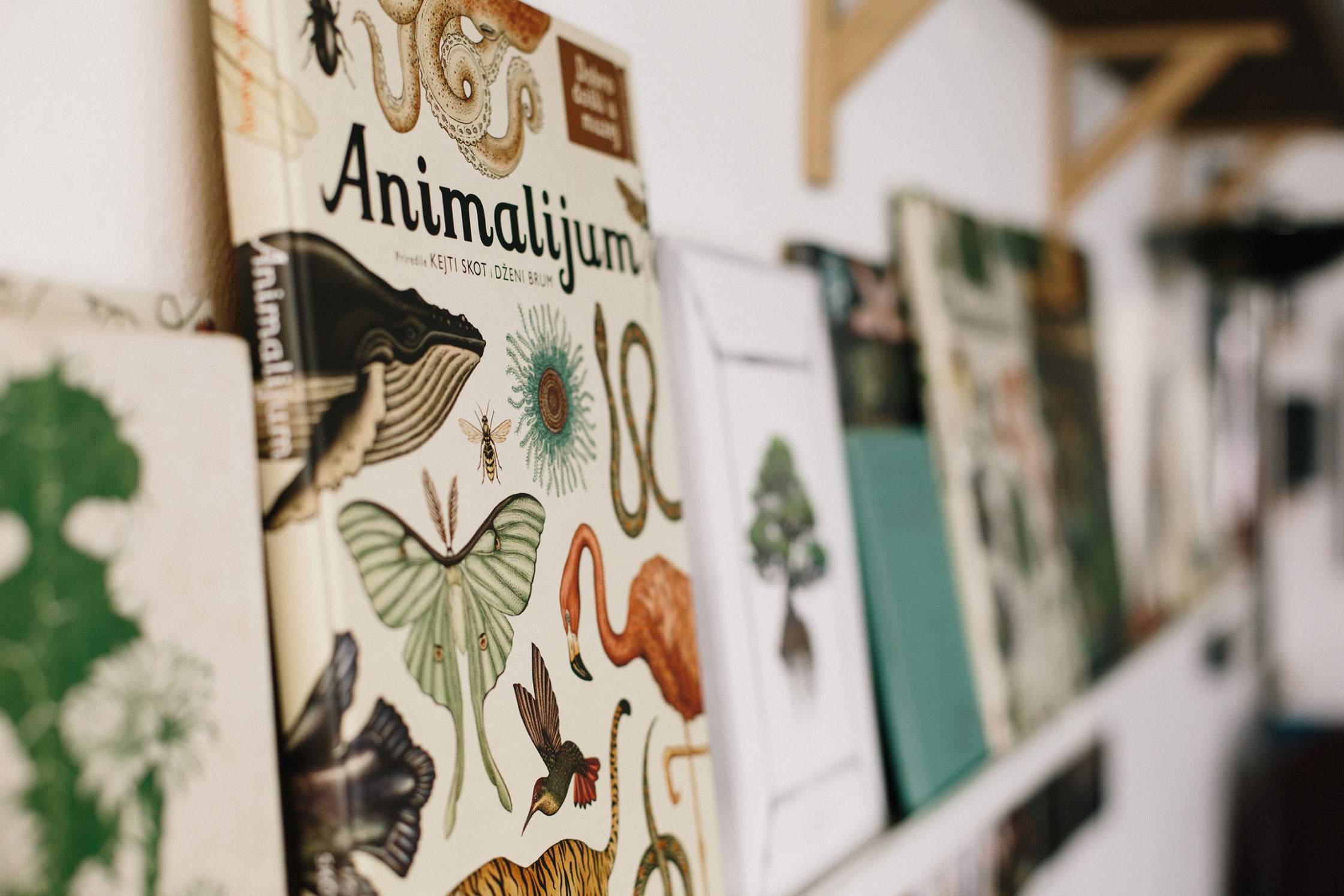
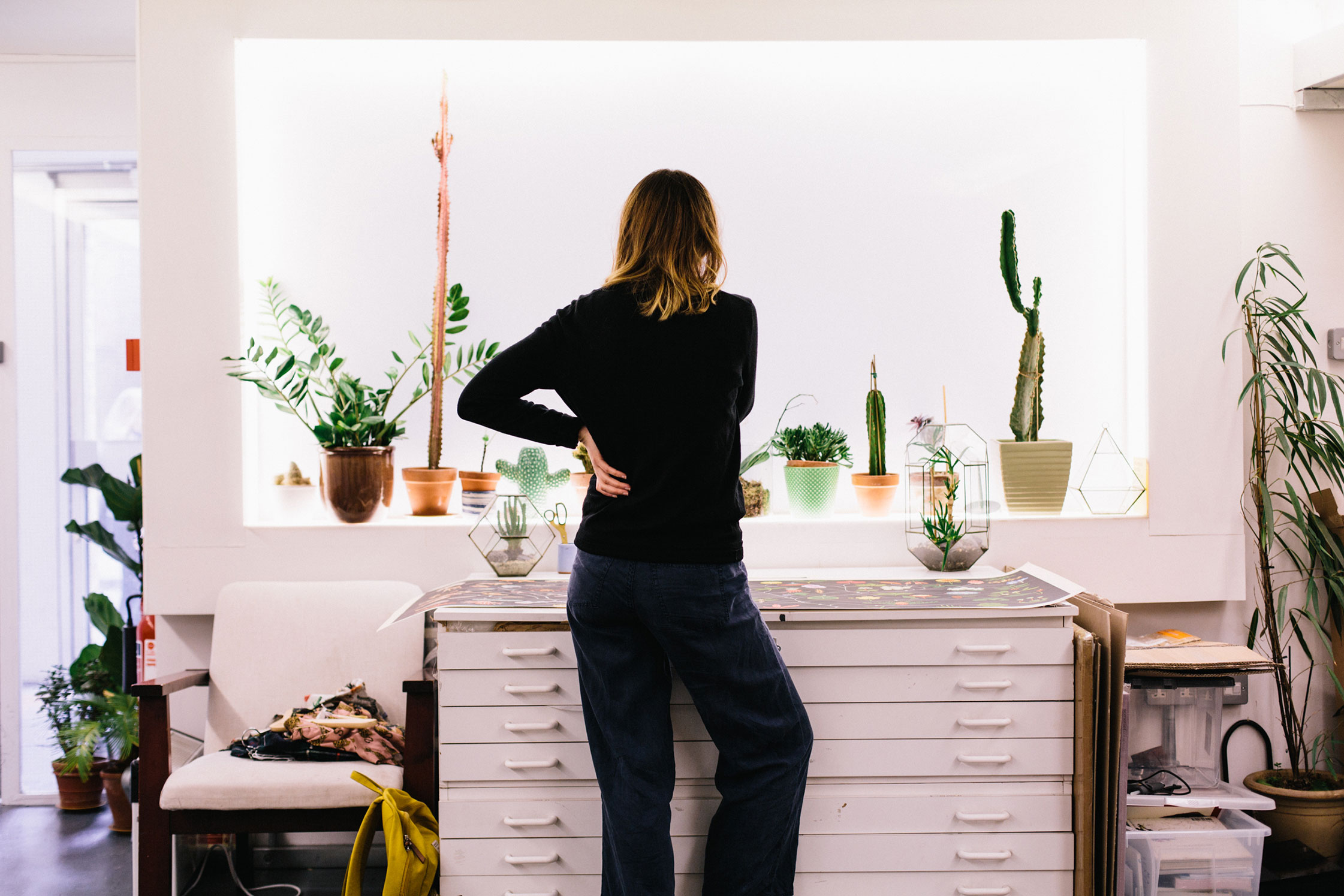
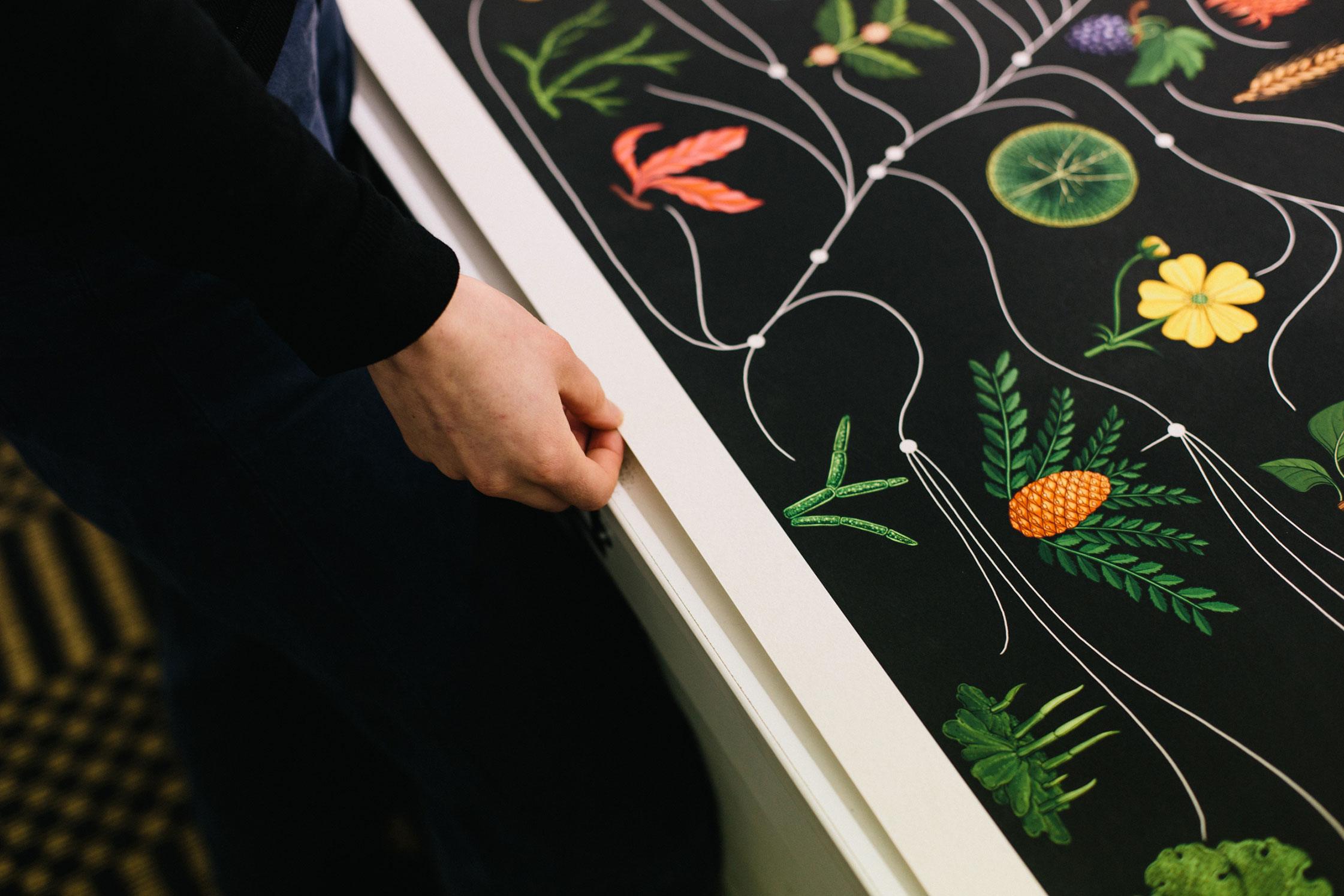
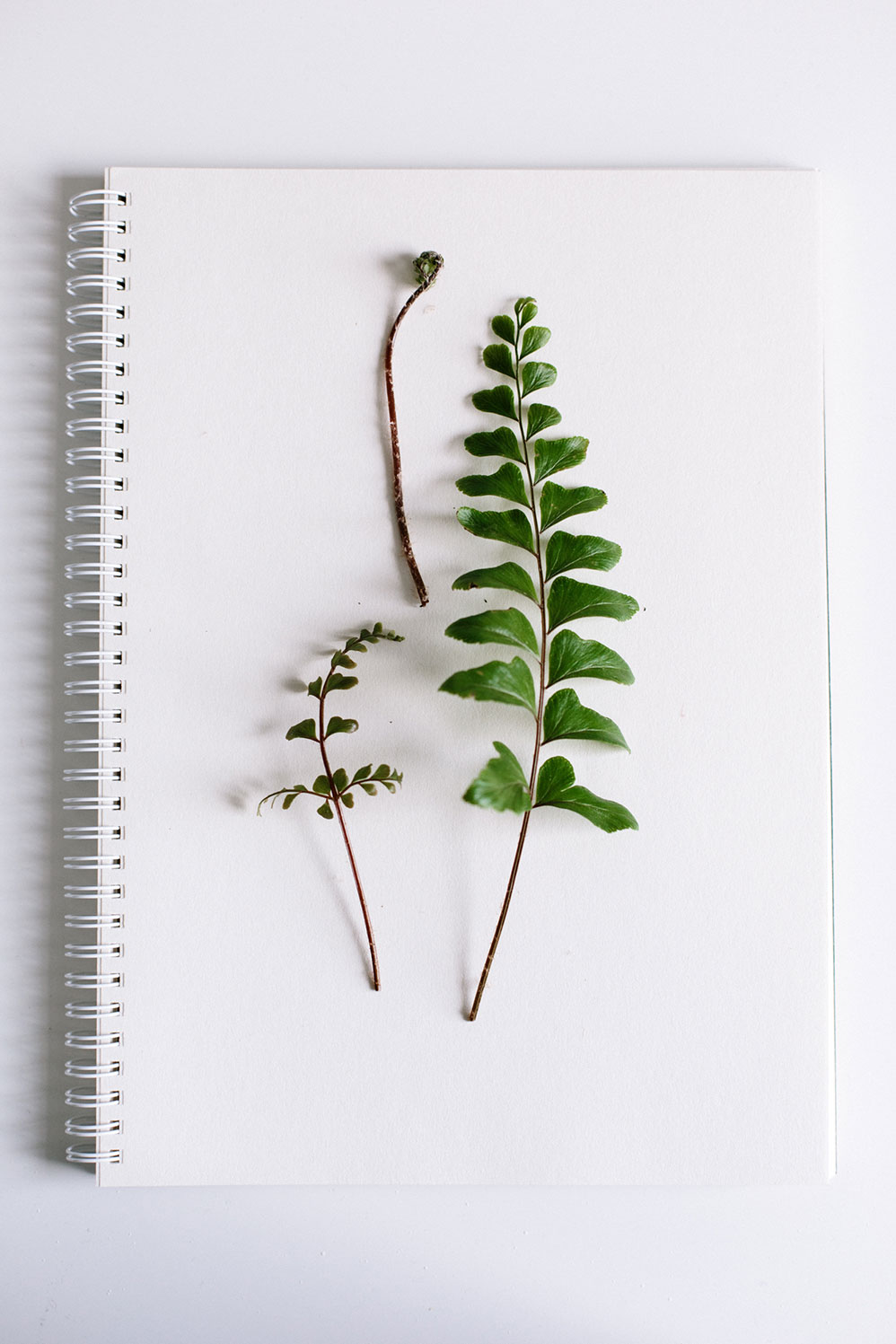
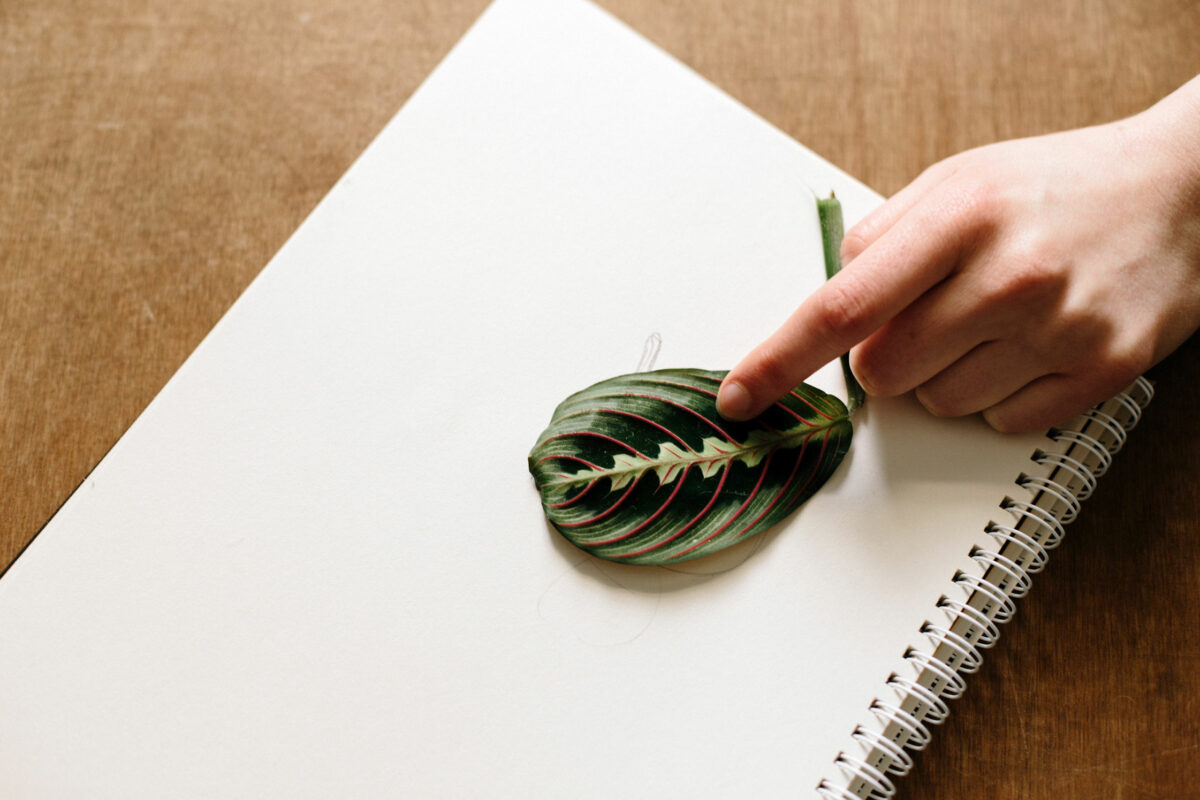
“There are things that illustration and artwork can do in representing the physical world that I don’t think photographs can.”
The success of Botanicum and the other books in the Welcome to the Museum book series has proven that there is a young audience for her sophisticated style, but getting people to take a risk on something new isn’t easy, Katie explains. “Ultimately, you have to have those strong personalities in the editorial arm of the publishers who can withstand the pressure from sales who are just going on figures of what’s been successful previously. I’m not into kids books illustrations that are naive or childlike. I know not all kids are like that but when I was younger, I wanted to look at impressive drawings that I couldn’t do myself, that I could aspire to. Making these books, I knew there had to be more little me’s out there.”
Katie’s practice differs from project to project. While working on Botanicum, she was given free rein of Royal Botanic Gardens, Kew meaning that she was able to spend time studying exotic plants in the flesh. Getting up close and personal with wild animals isn’t always such a possibility. For that, she relies on a wealth of illustrations and articles to give her an understanding of their anatomy. “I like drawing both but I do find animals harder because they have so much personality. Plants are almost mathematical. If you spend a few minutes studying a plant very briefly, understanding at what angle the branches come out from the stem, noticing how the stem joins the leaf—basically, studying the structure of the plant and the moments of change—you can manipulate it and fit it into any space you like. You can get almost an archetype in your head to work from. It’s the same with flowers. Whereas an animal has character and individuality, it has a face.”
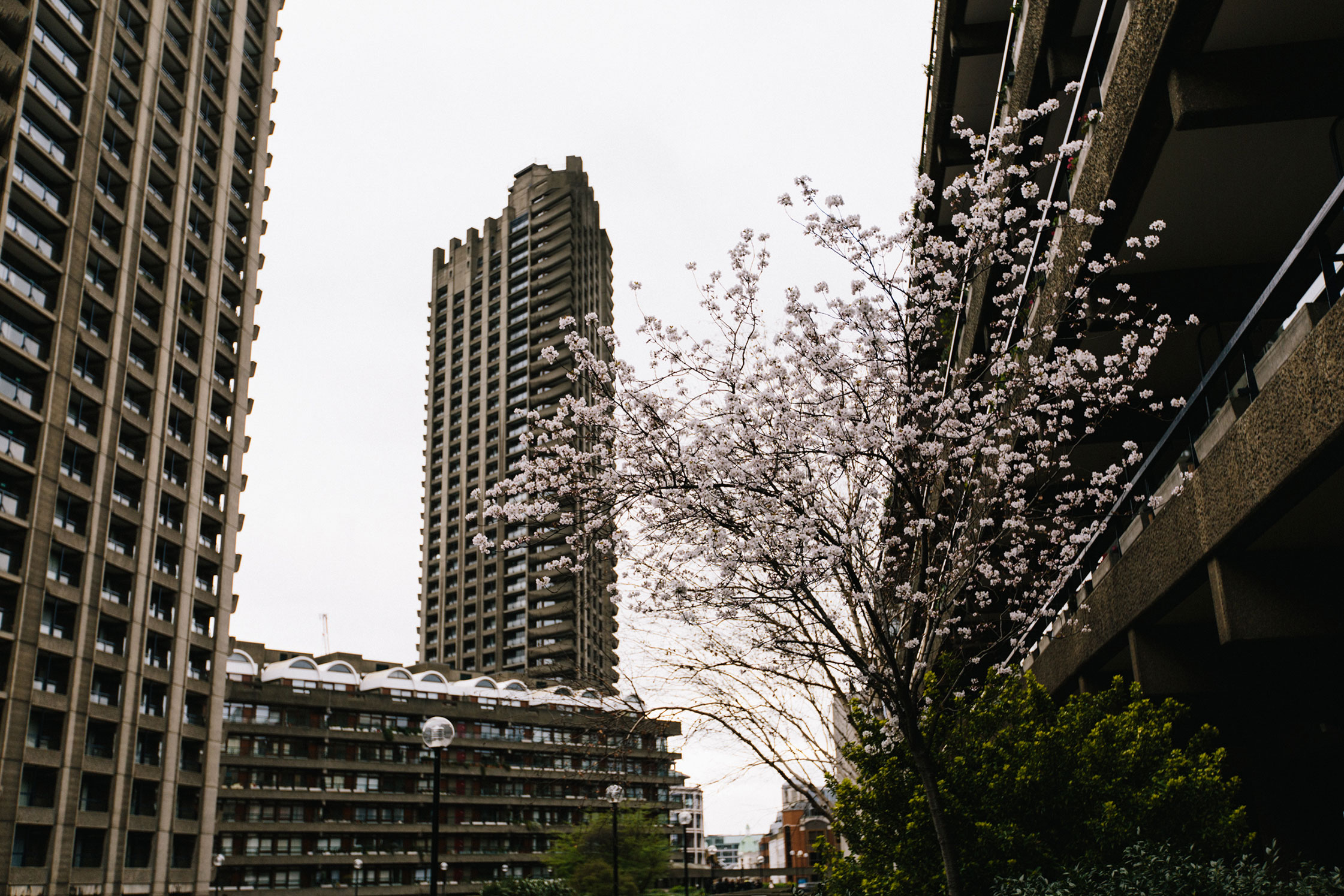
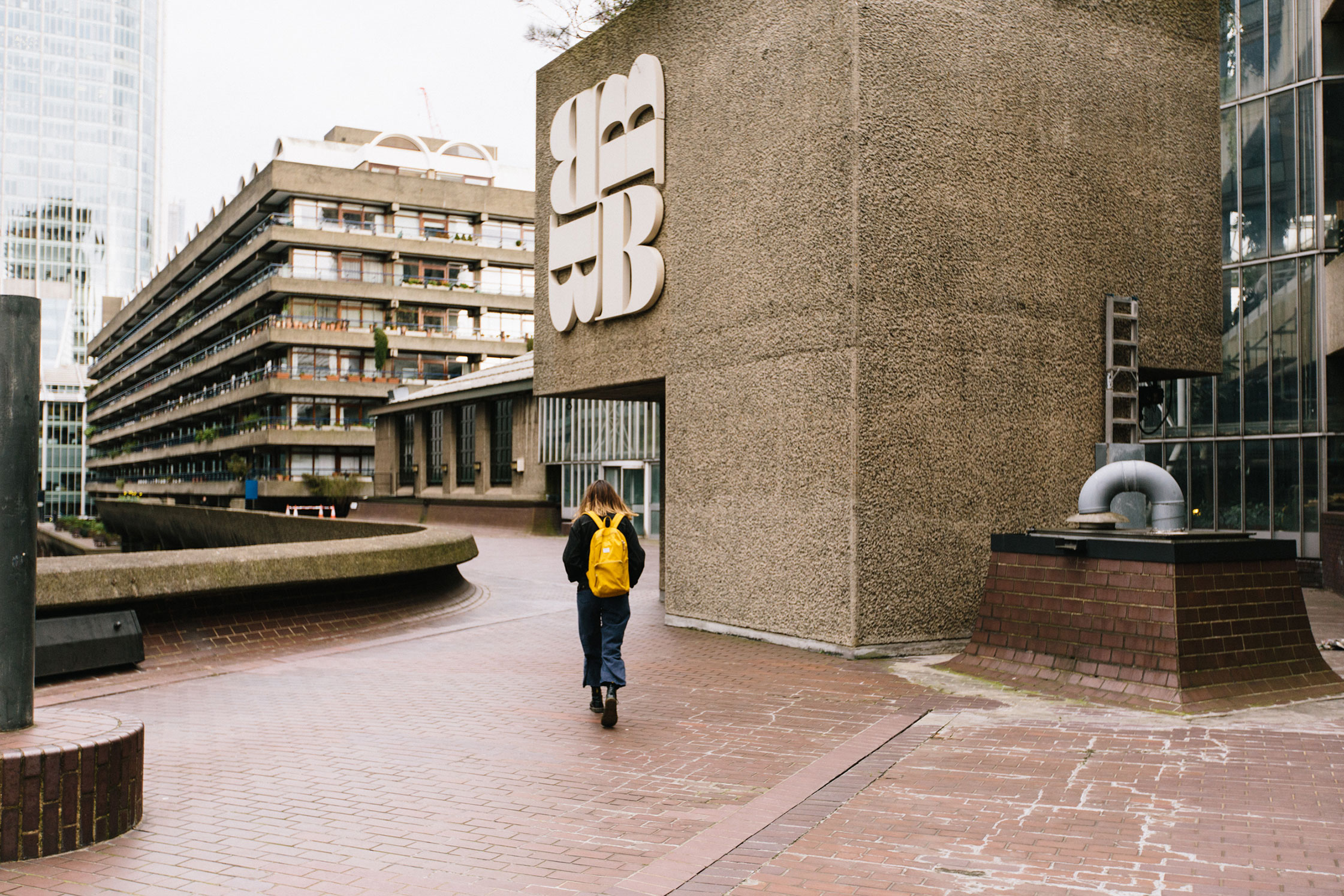
“With illustration, you’re not just producing a representation but also relaying any number of images and influences that you have absorbed.”
For that reason, she often draws animals in pen before moving on to the tablet. “When you zoom in on an eye and spend too much time perfecting, you lose that reality and character. It becomes too hyperreal.” Once on her computer, she fills in using color variants made from the same five watercolor swatches she scanned in years ago. It’s this distinctive palette that gives her such a rich yet refined signature, one that lends itself perfectly to fashion and interior design. What gives her work extra weight is that sense of history and culture behind each design. “For me, it’s not just that this plant is beautiful here and now, but also how it has existed before. I might have seen a picture of it in a medieval book or in a photograph online that affects how I subsequently draw it. With illustration, you’re not just producing a representation but also relaying any number of images and influences that you have absorbed.”

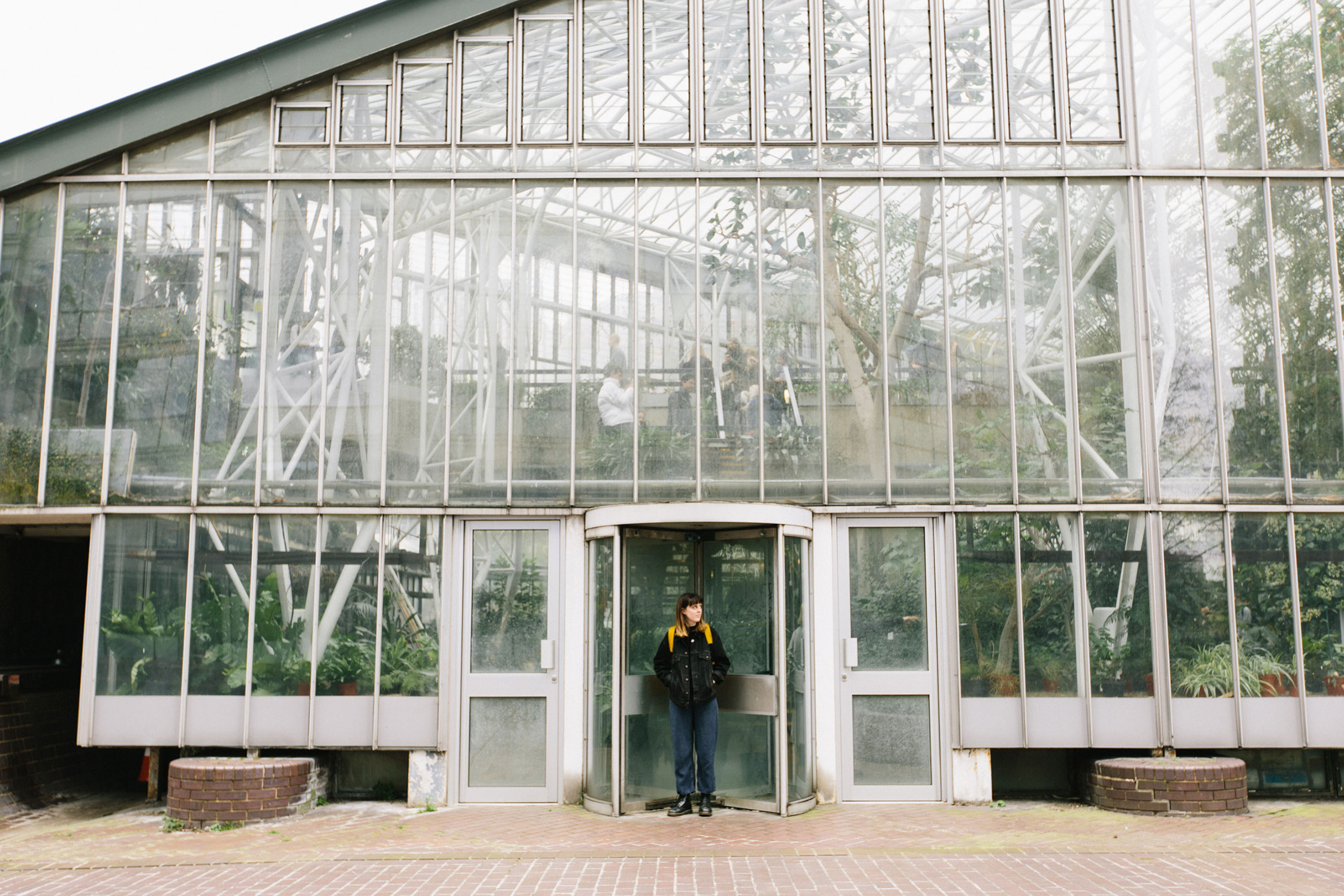
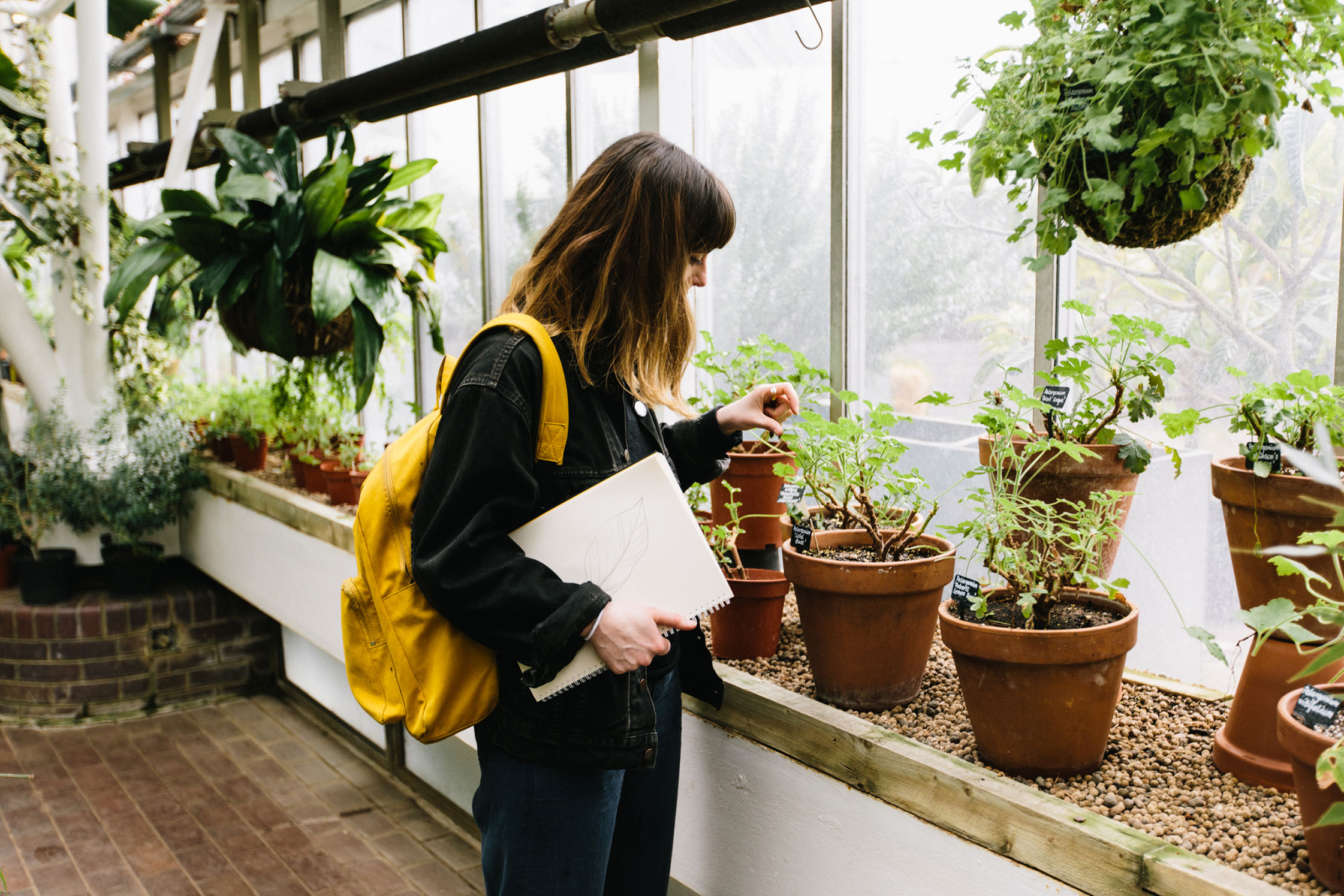
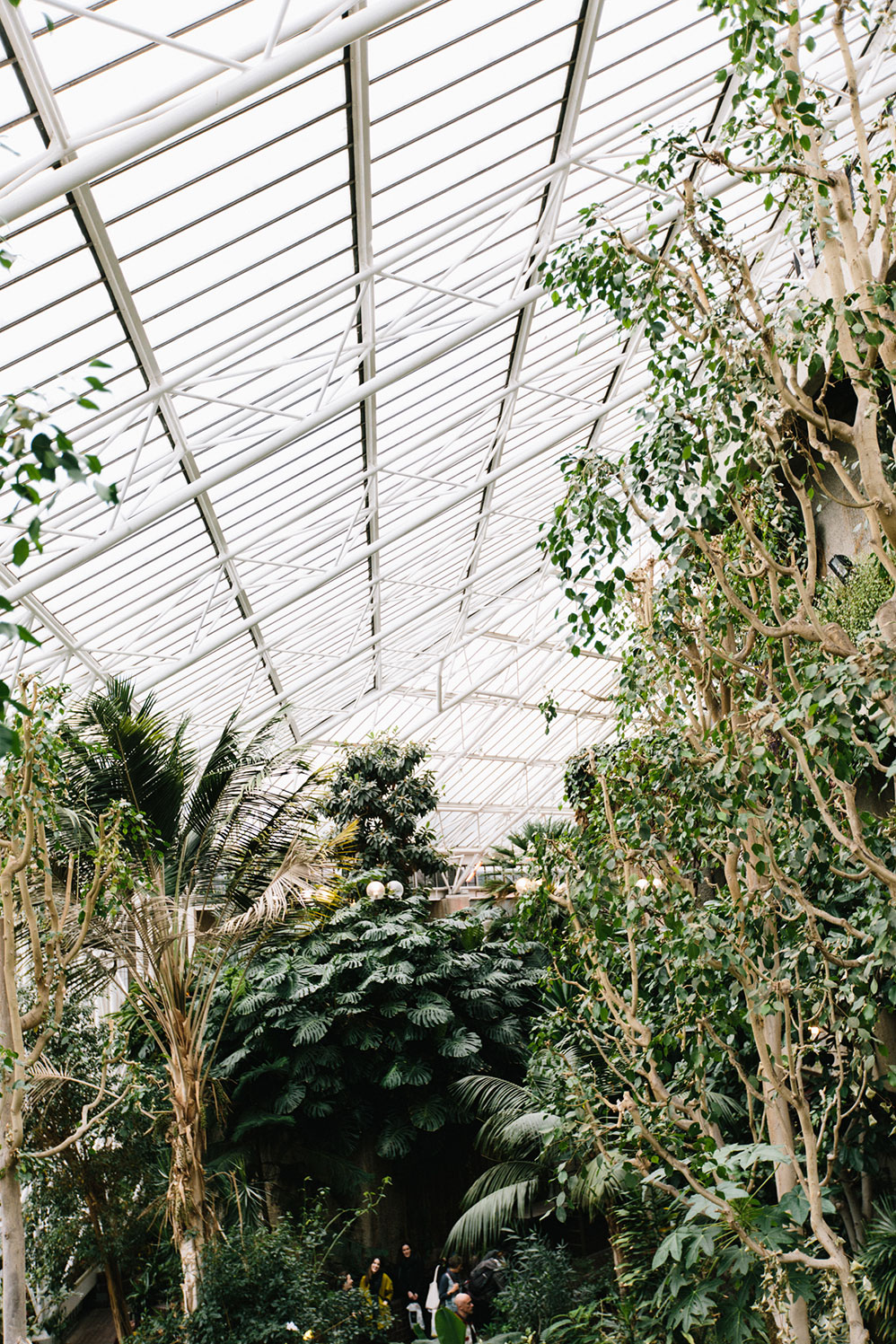
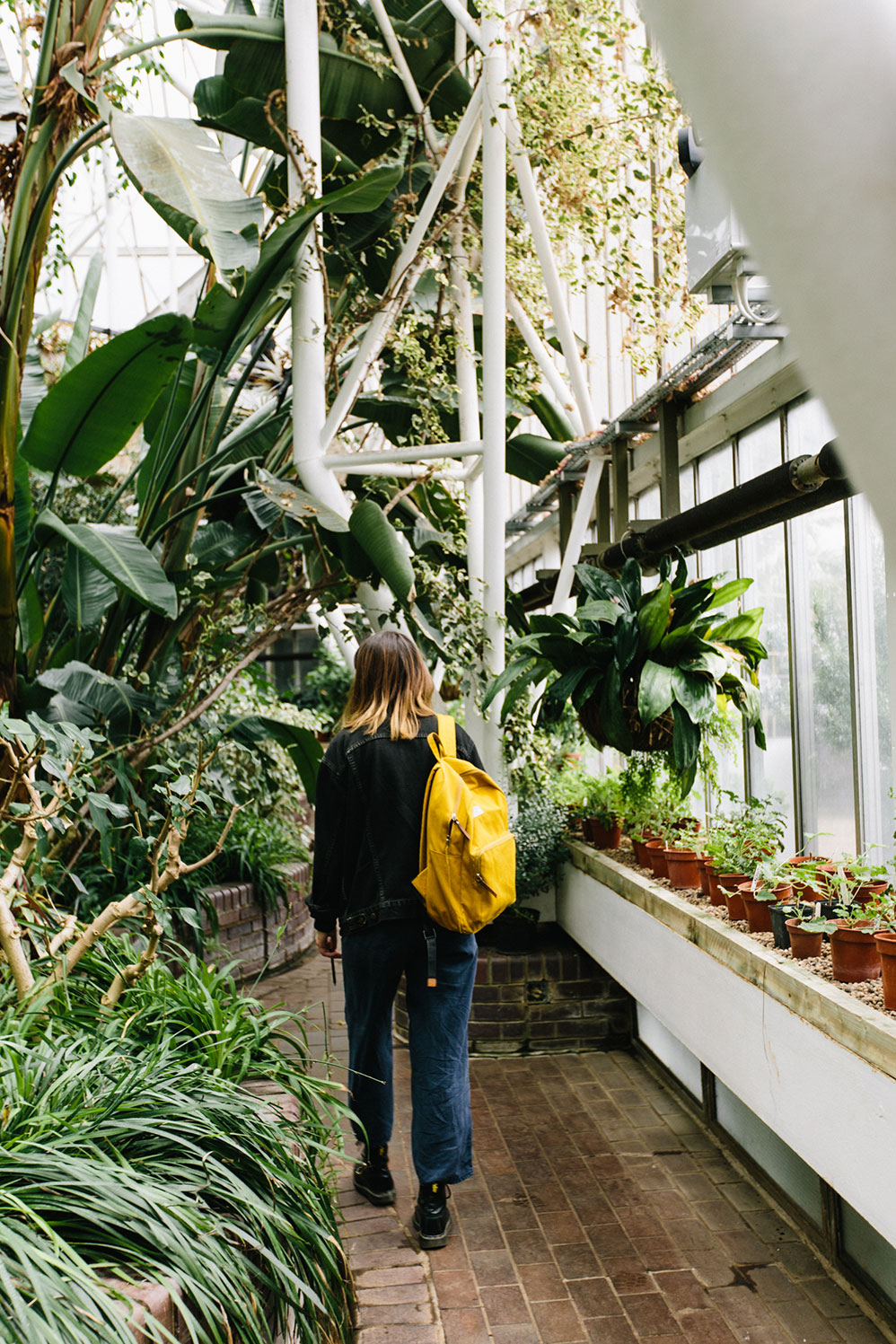
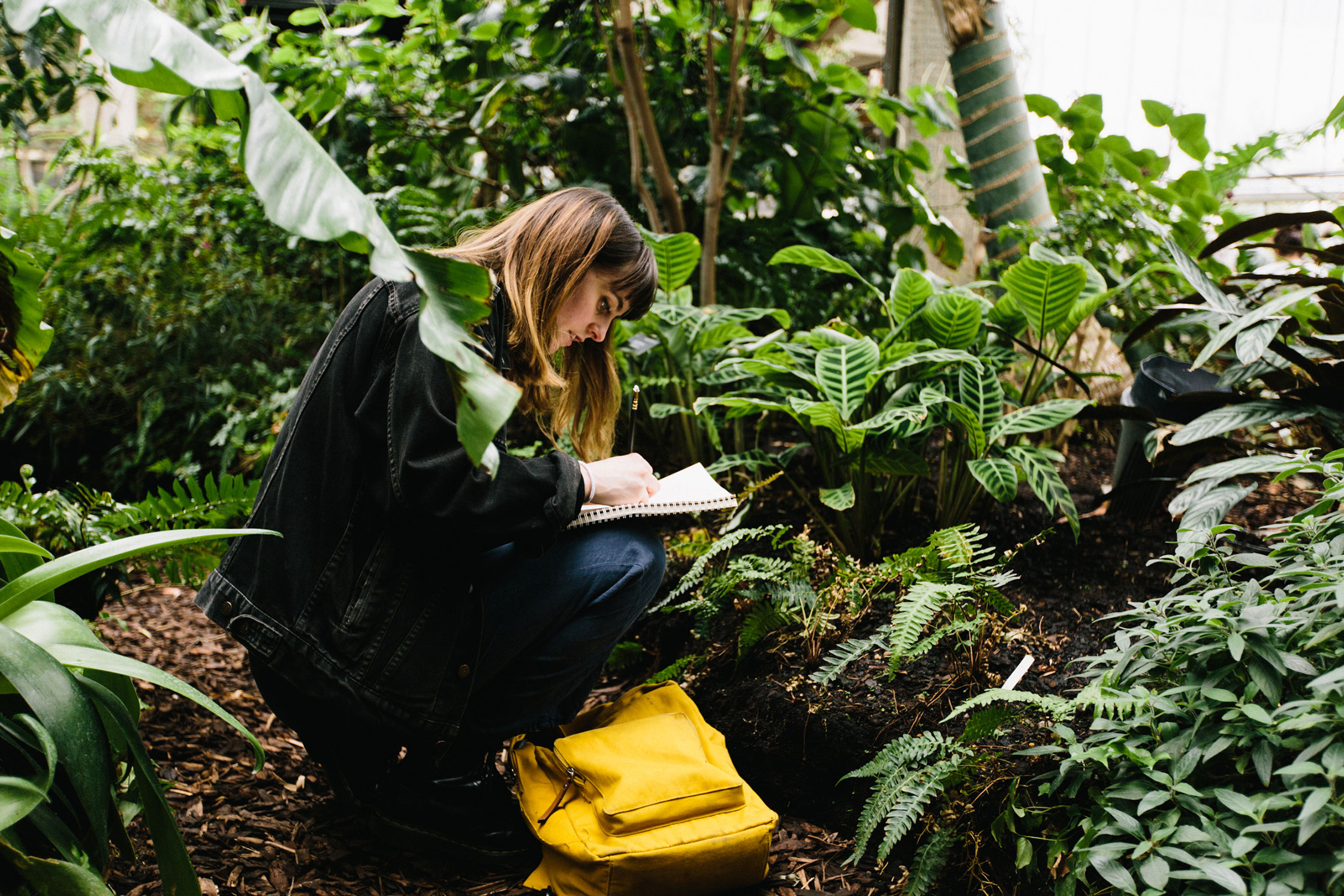
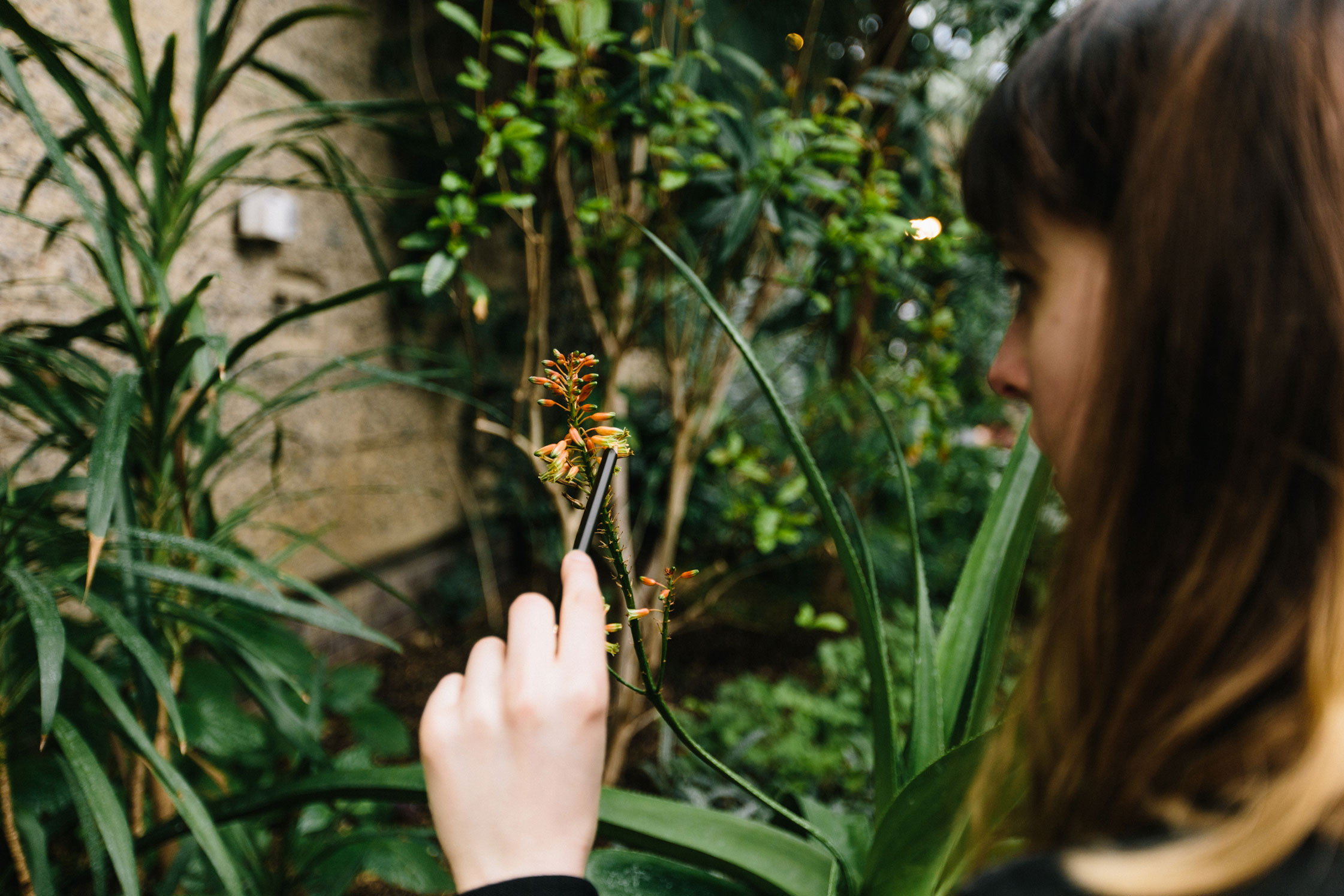
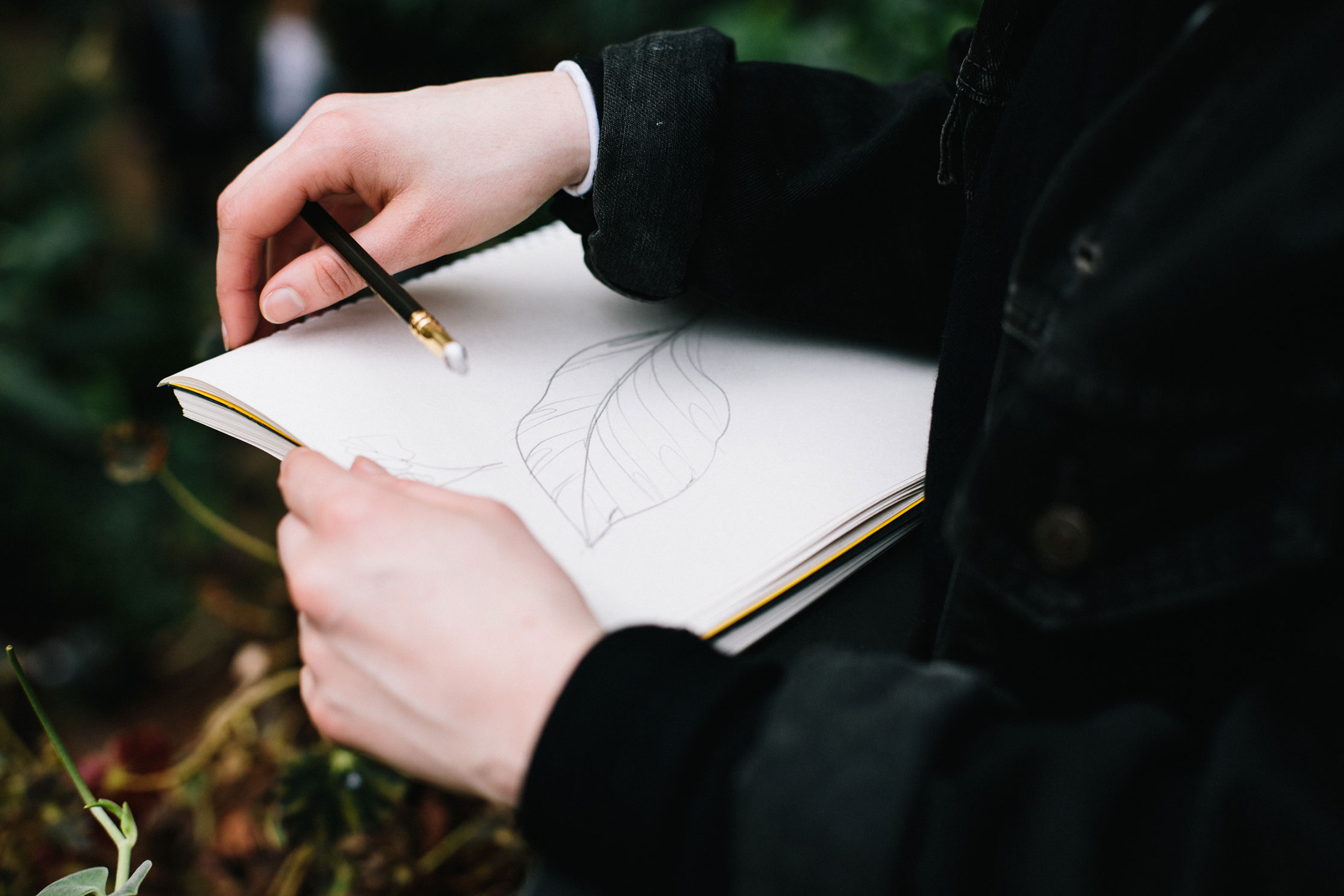
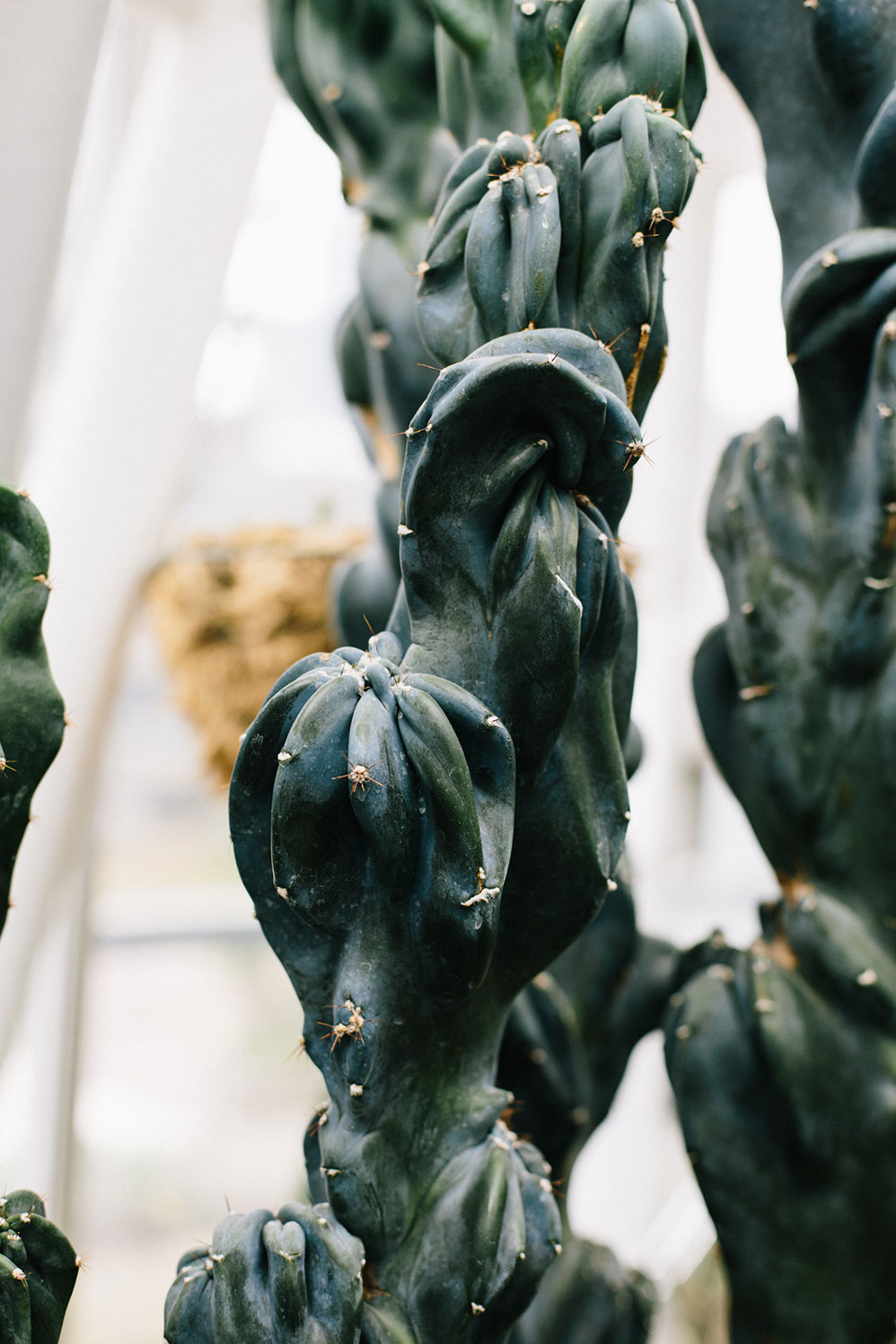
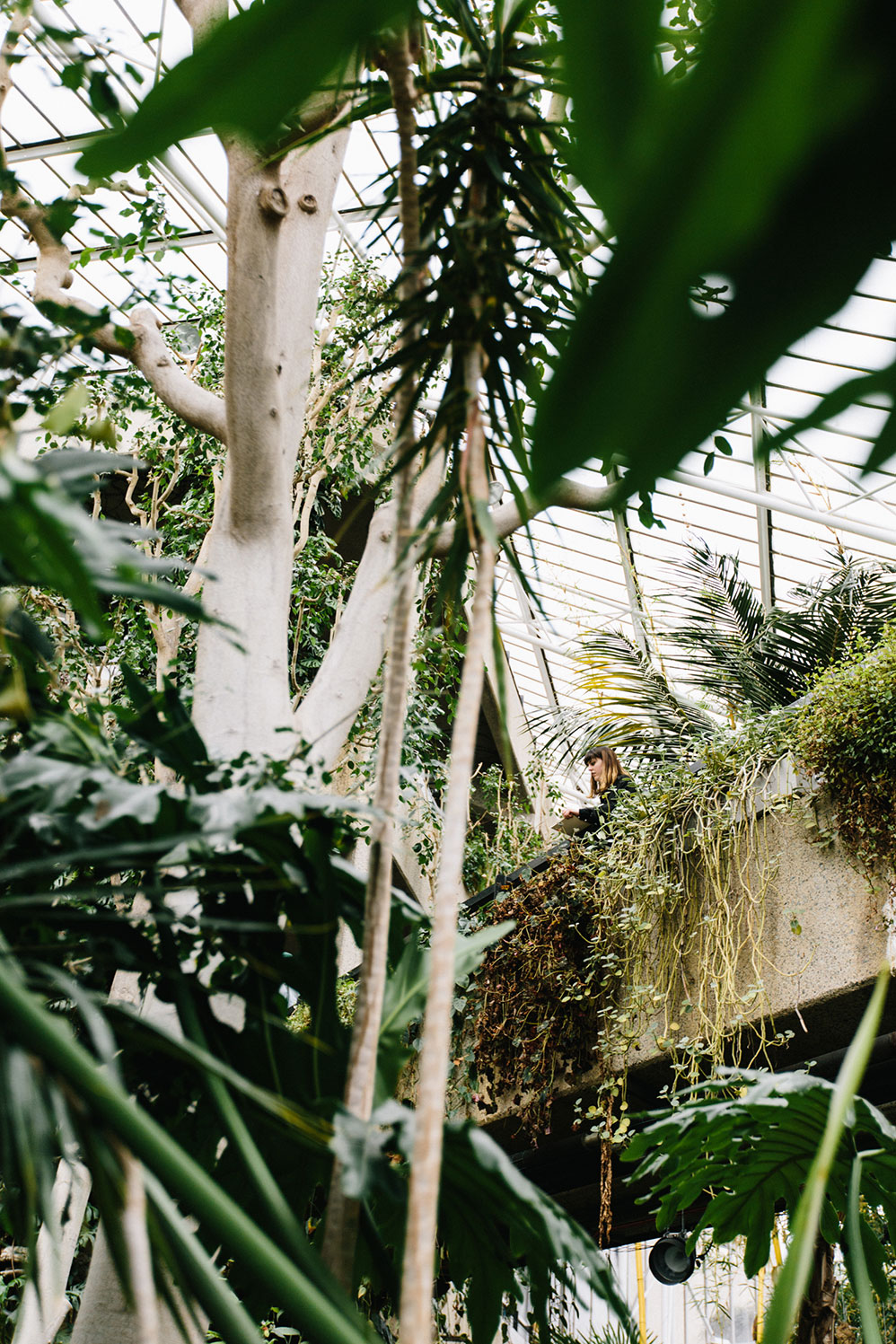
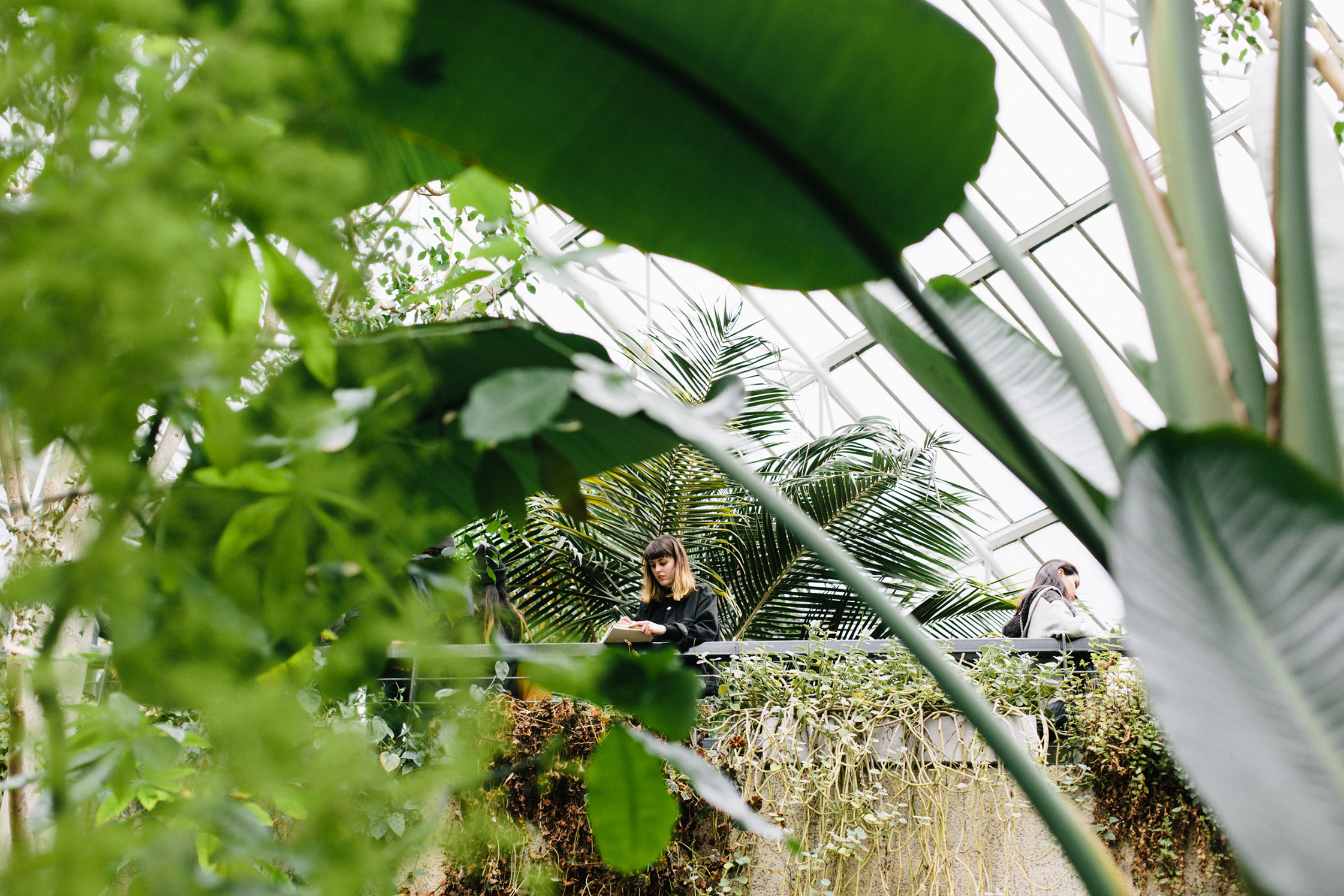
This is particularly evident looking at the bold, weaving storyboard behind Katie’s desk, a work in progress in which she’s teamed up with animator boyfriend James Paulley and Japanese florist-come-artist Makoto Azuma. It was Makoto, whose past projects include such feats as blasting a white pine bonsai tree into the stratosphere and freezing bouquets in huge blocks of ice, who got in touch asking to collaborate. Katie has mentioned that the usual process of getting work involves “someone contacting me and asking me to do something, me being a bit hesitant as I want to ensure I can devote enough time to each project, then them eventually talking me into it!” But this one must have been a no-brainer. Their styles are different but share strong artistic sensibilities and references; on one hand celebrating a history of human understanding and mastery of plant life, on the other exploring the mystery and possibility of the natural world.
At the crux of Katie’s art, and career too, is balance. In her art, there’s a play between seduction and danger, light and dark, reality and fantasy, the known and the unknown. In her career, she’s balancing vision and compromise, technique and technology, when to say yes and when to say no. “Sometimes boundaries help fuel your creativity,” Katie says, discussing page layouts at this point, but she could easily be speaking more broadly. By tuning in on the details of the natural world, she has conversely created a space where imagination—both hers and ours—can run wild.
